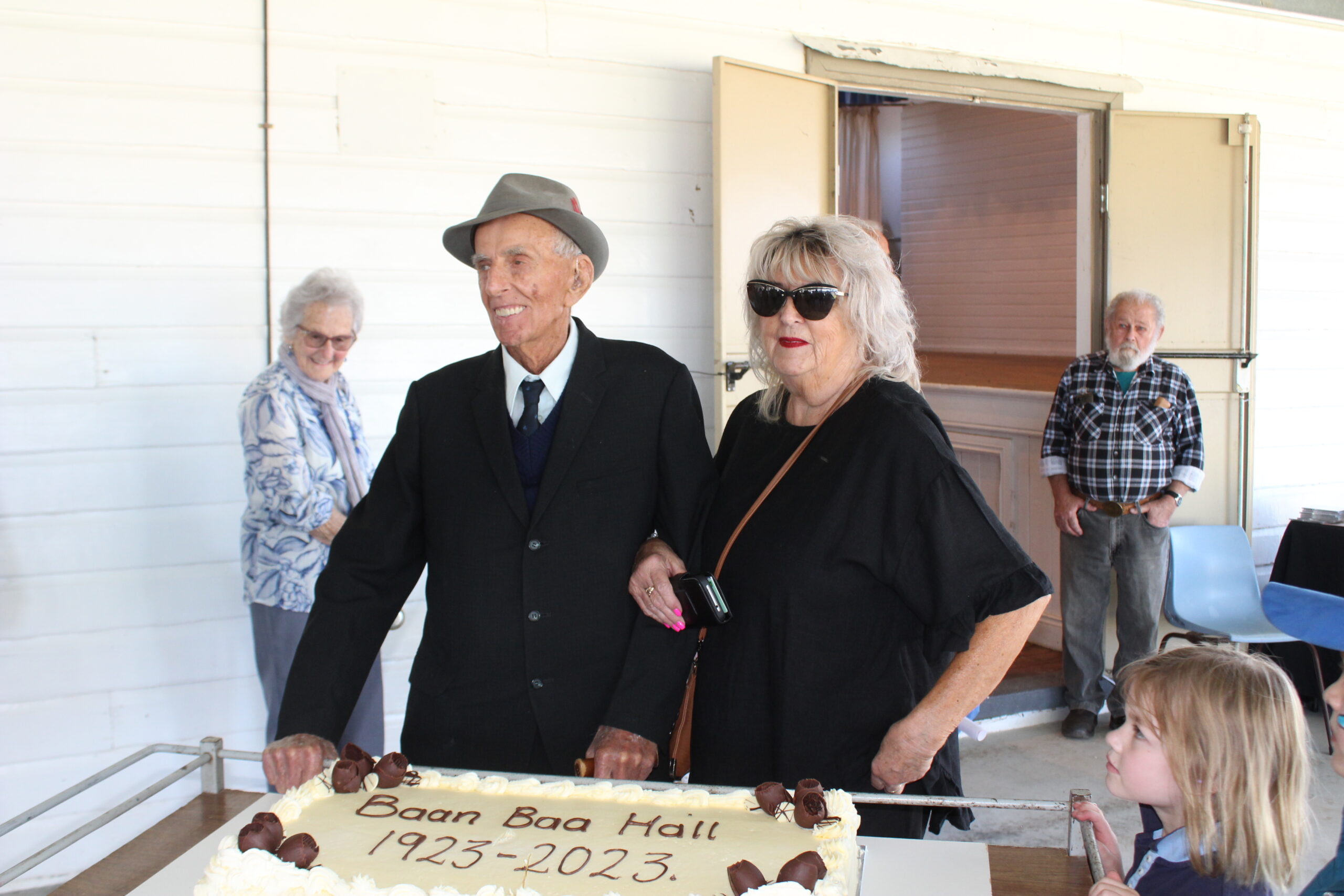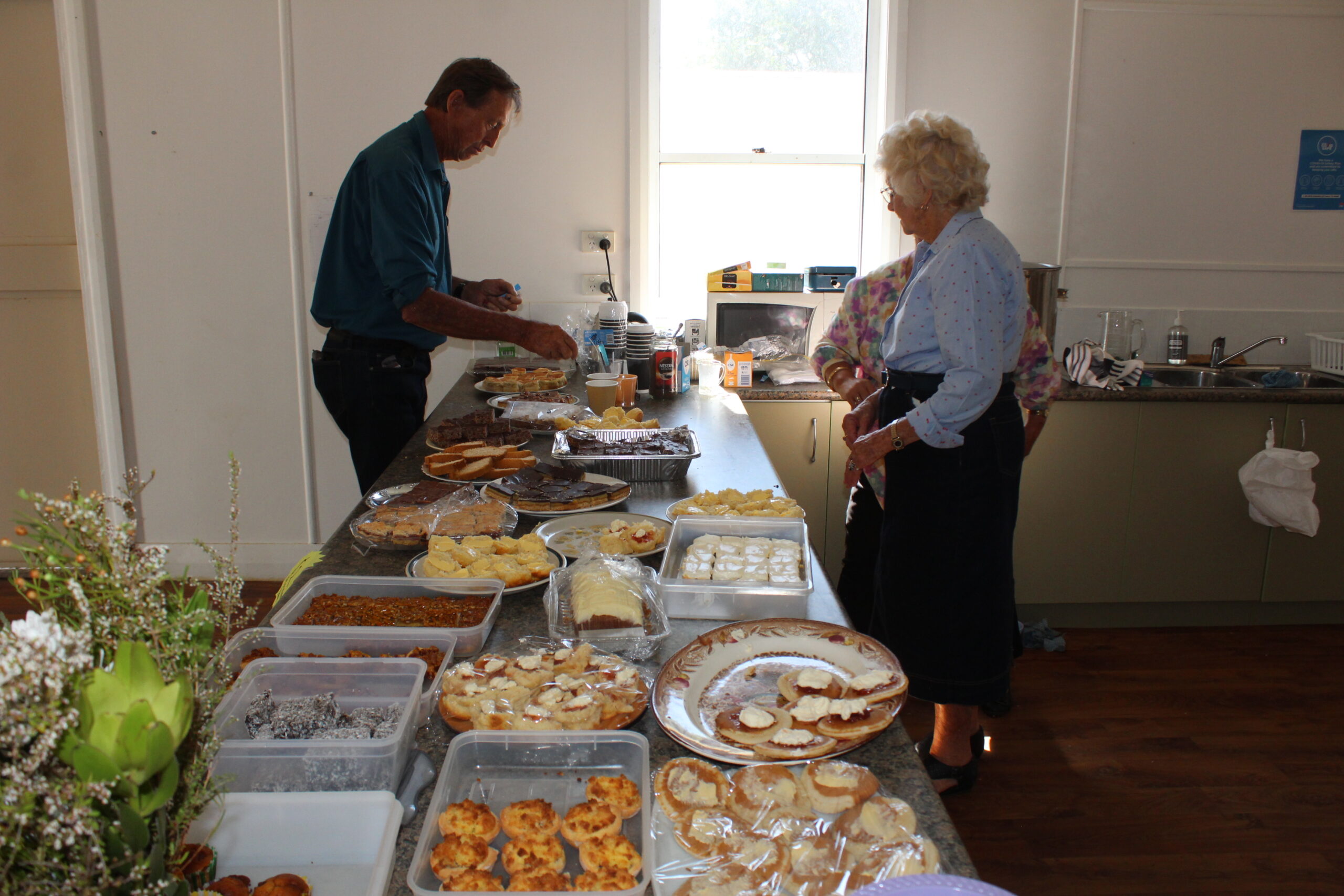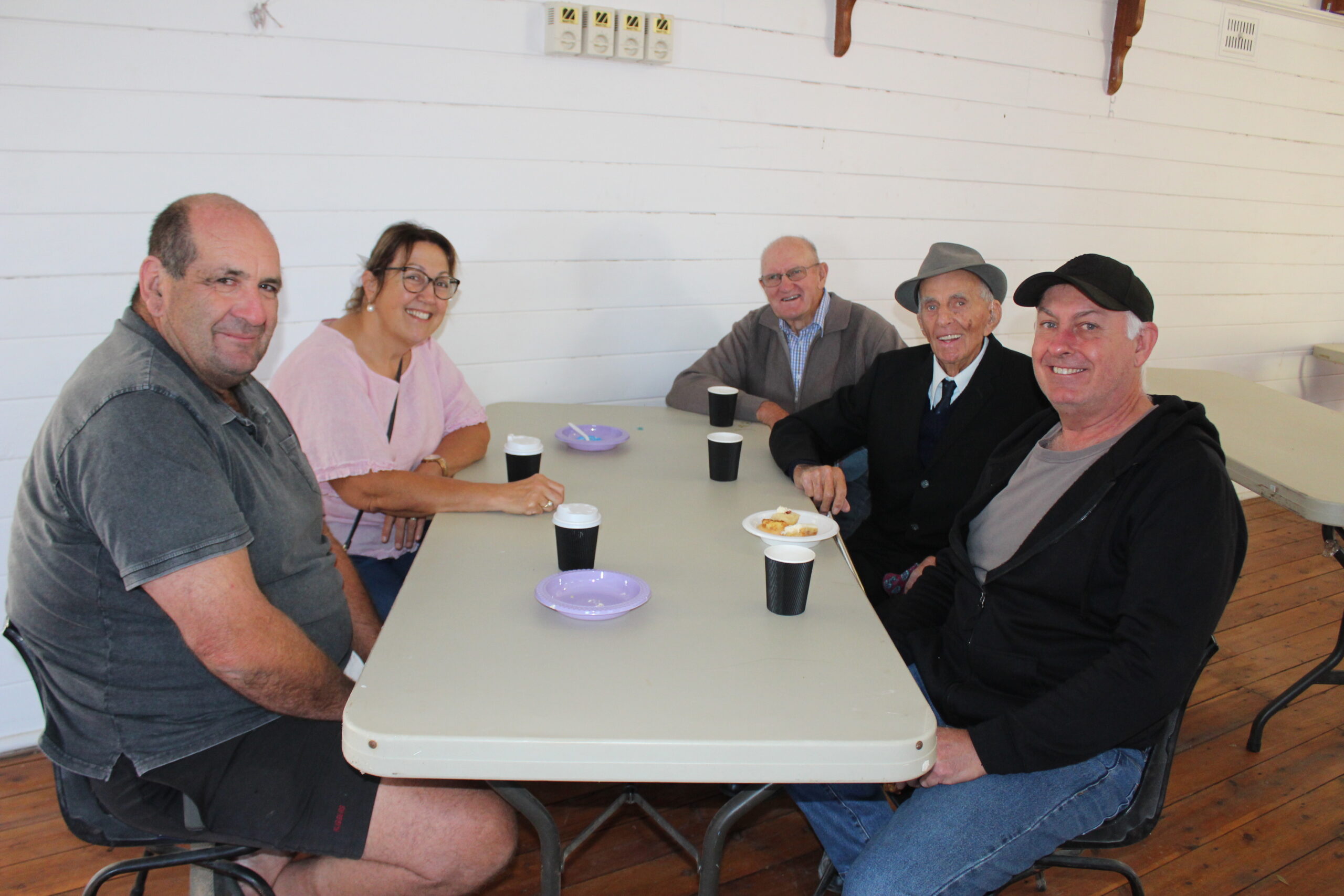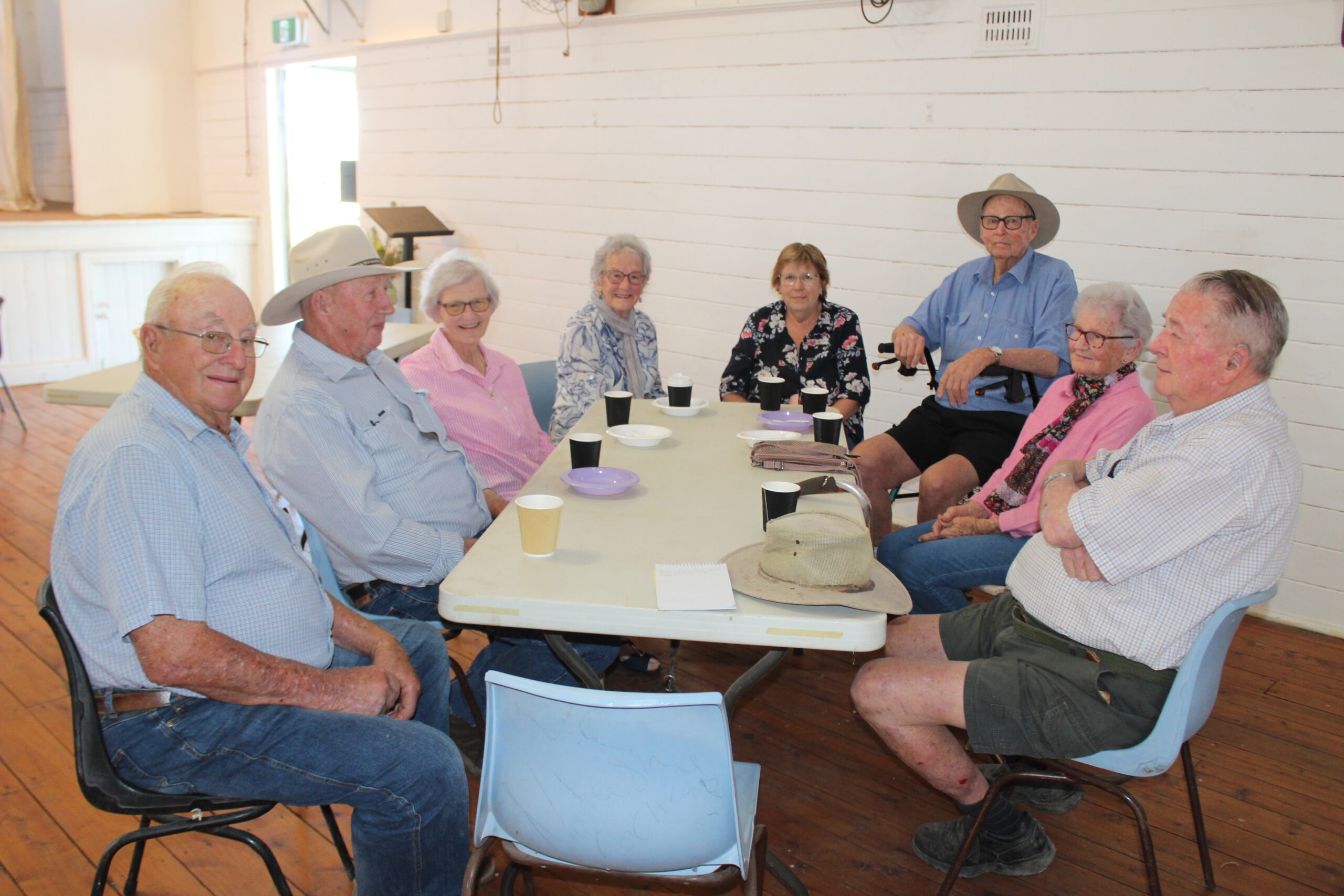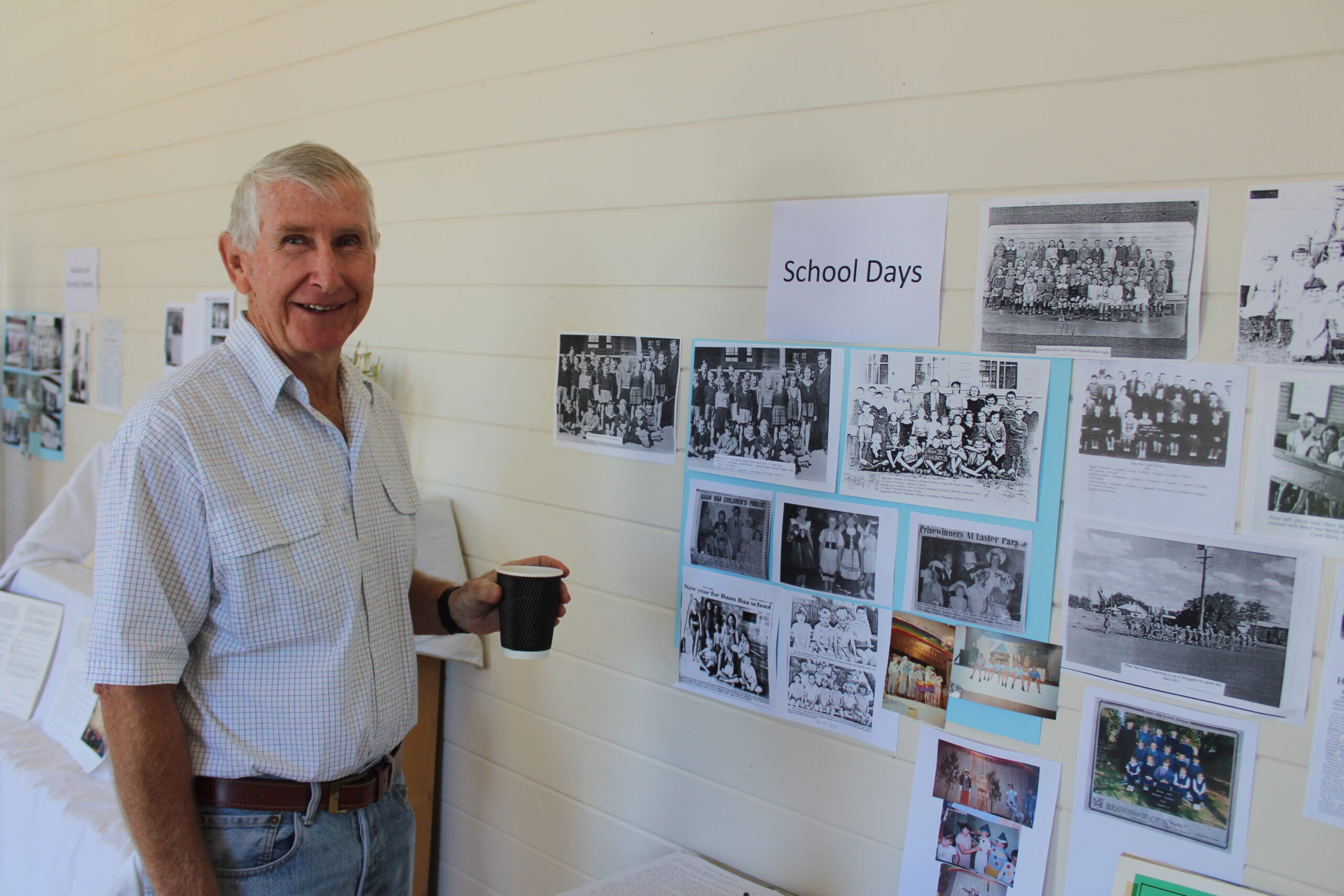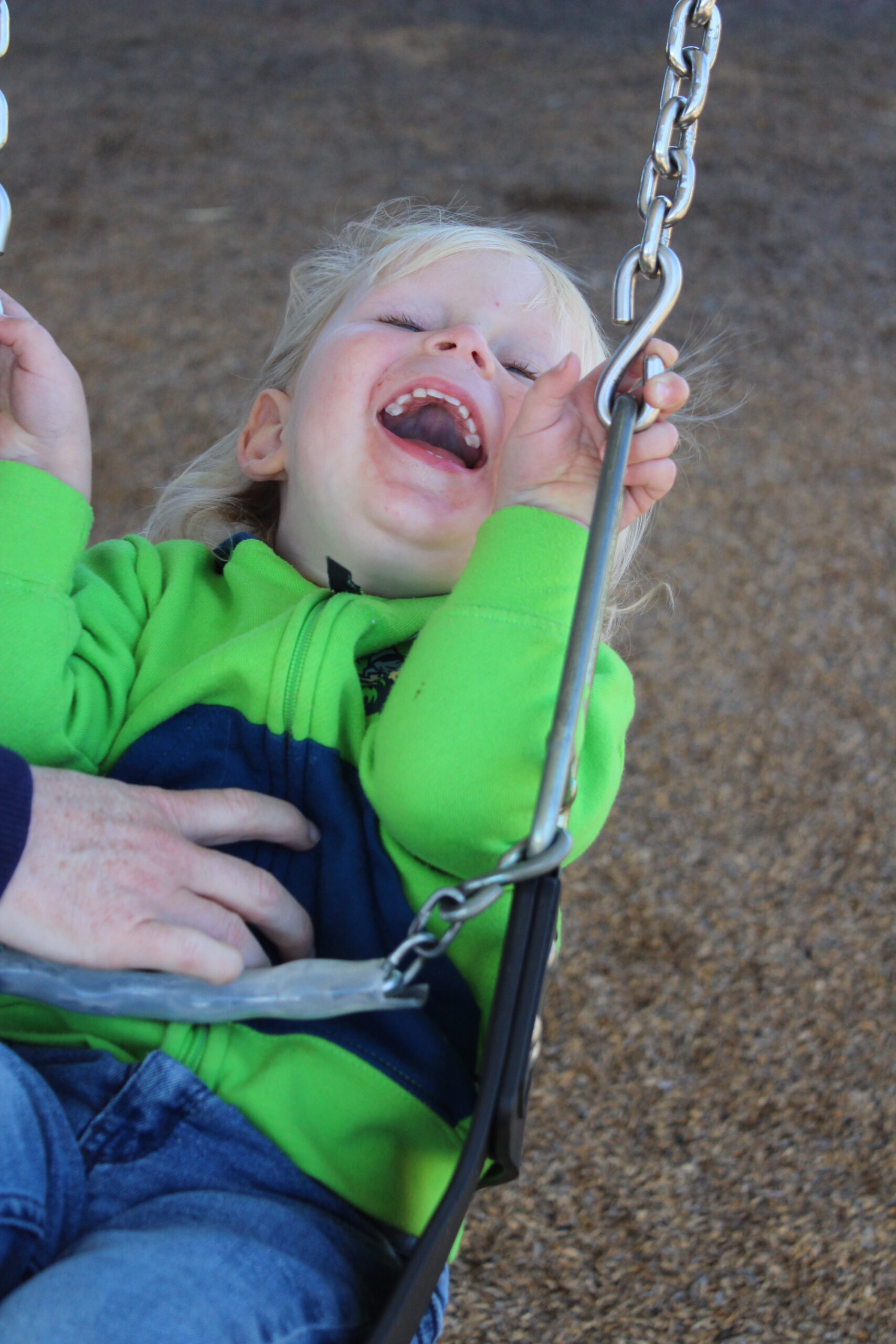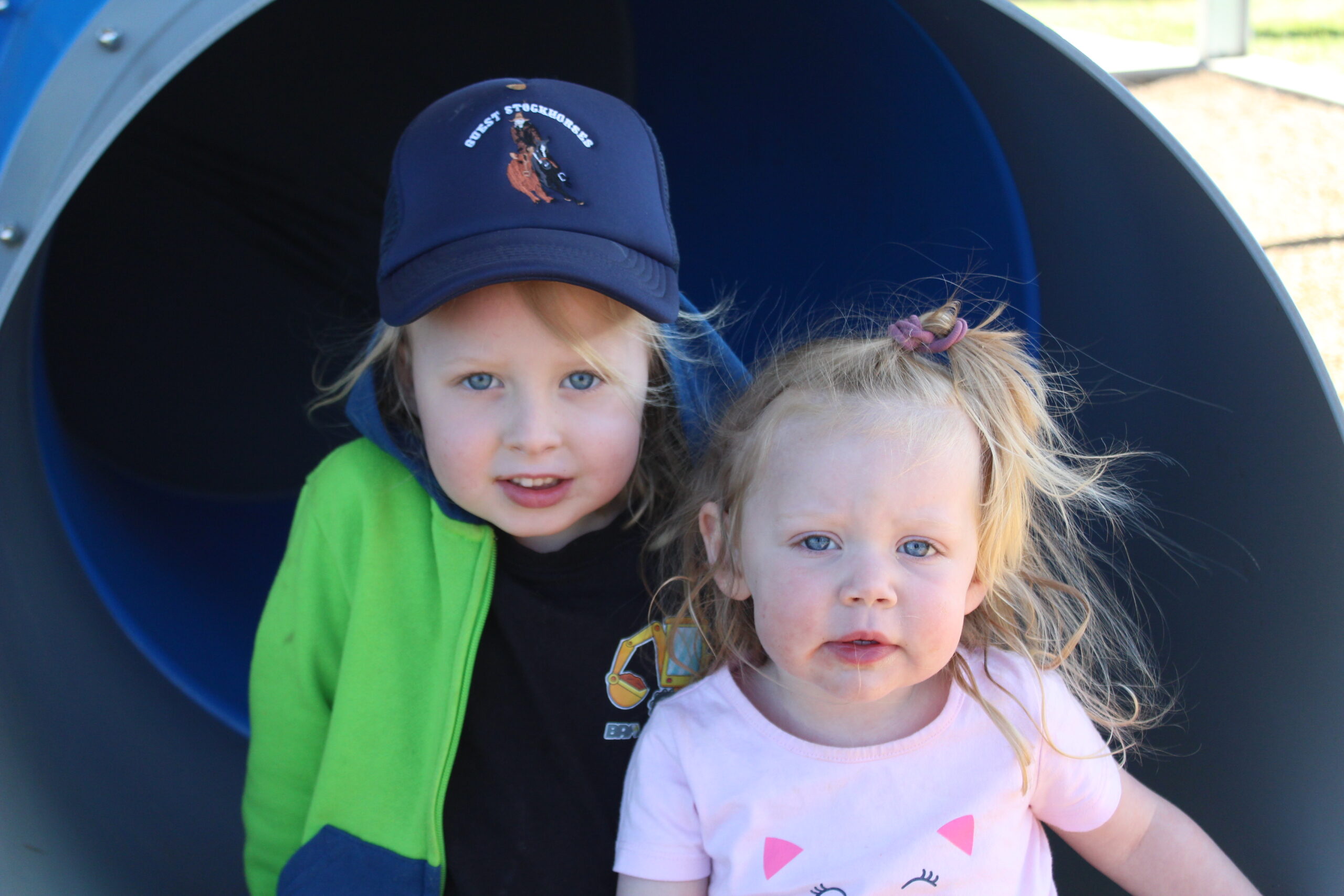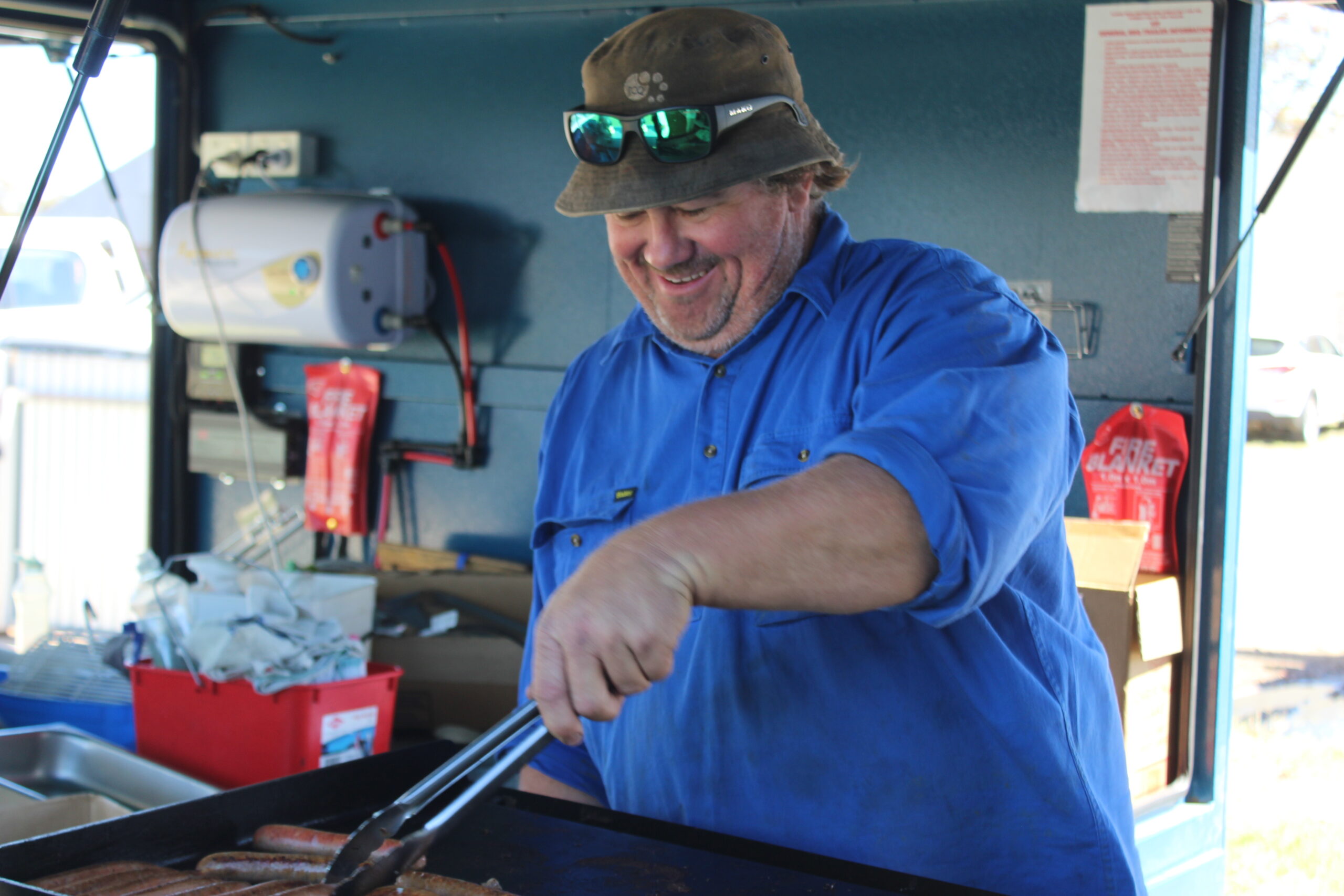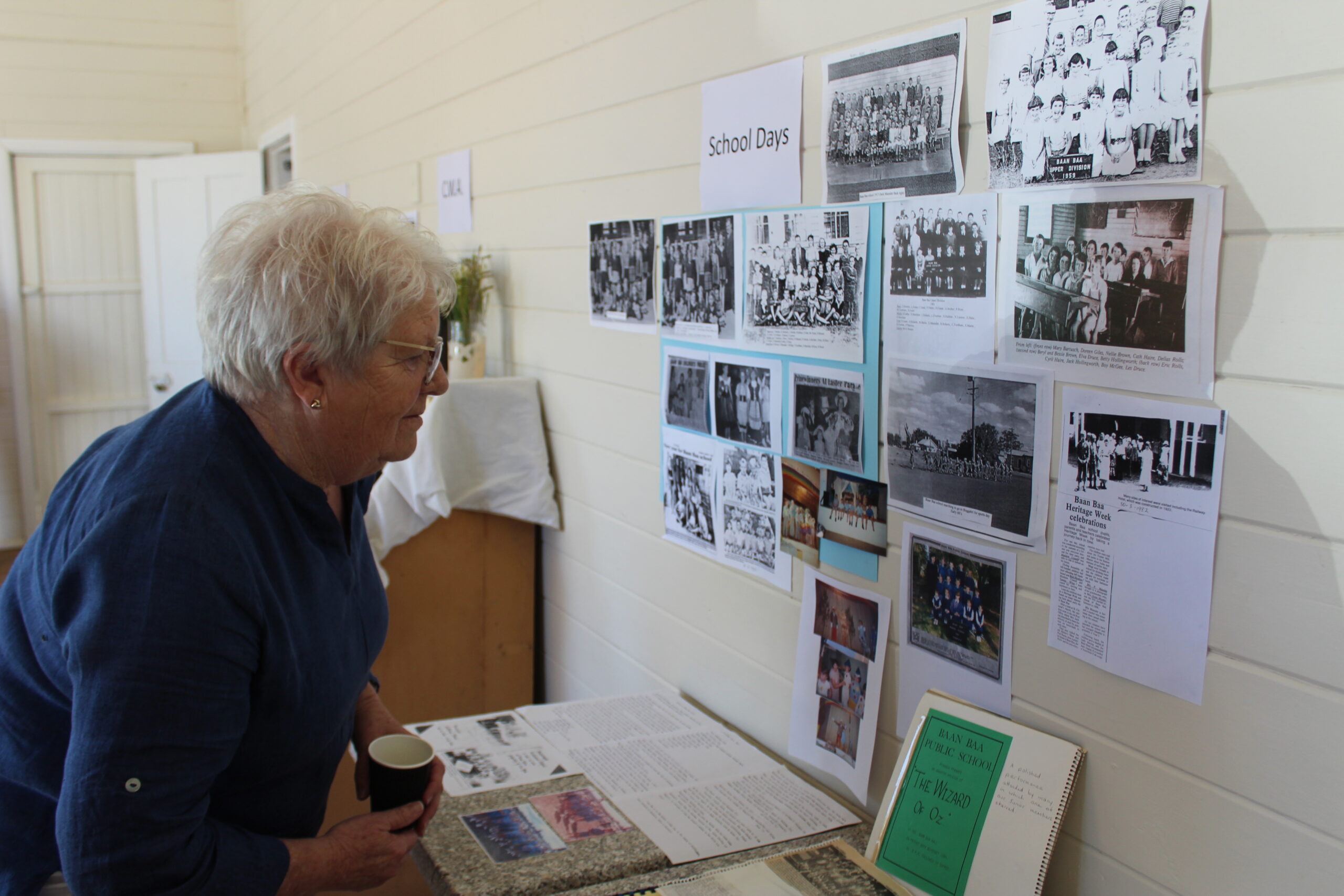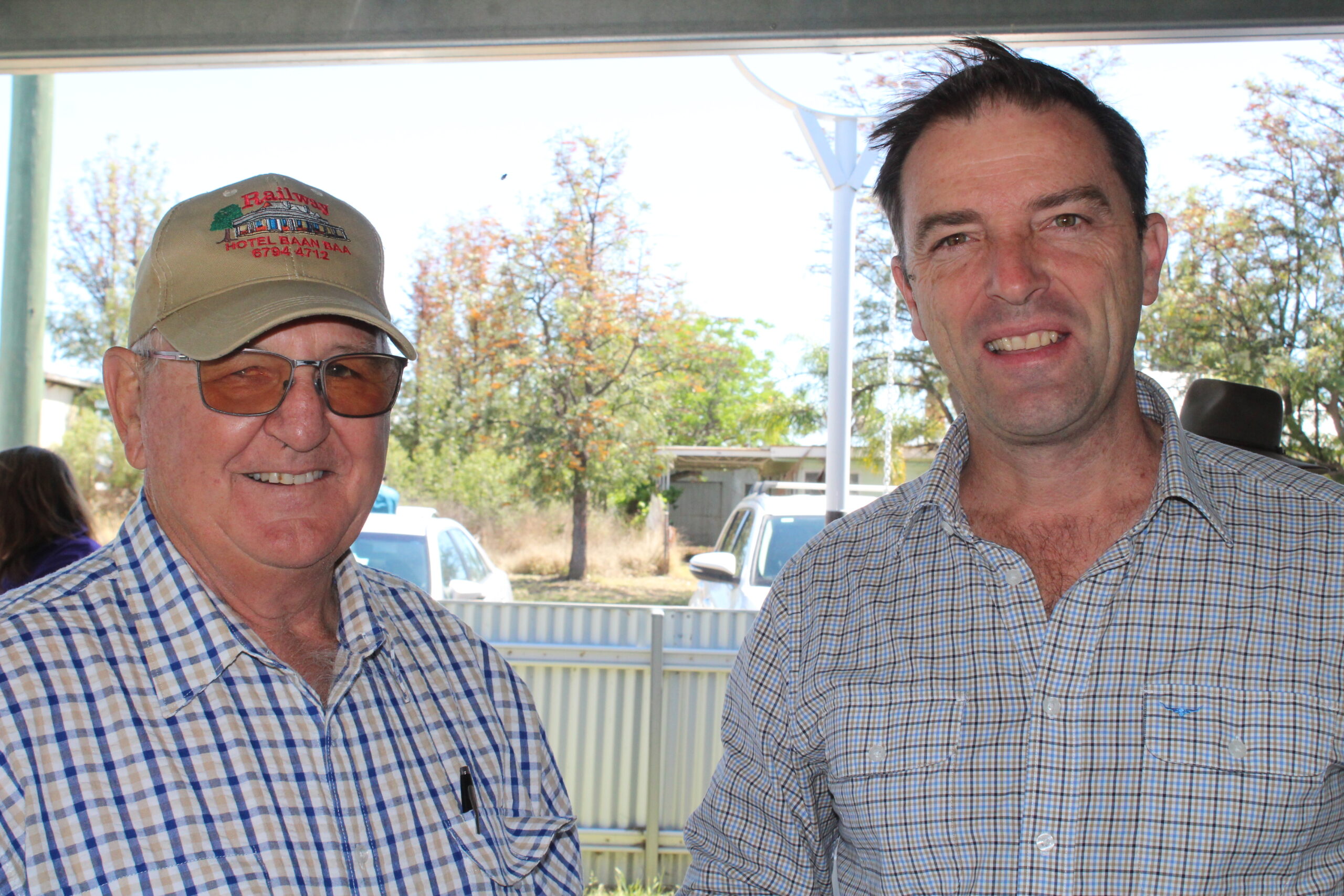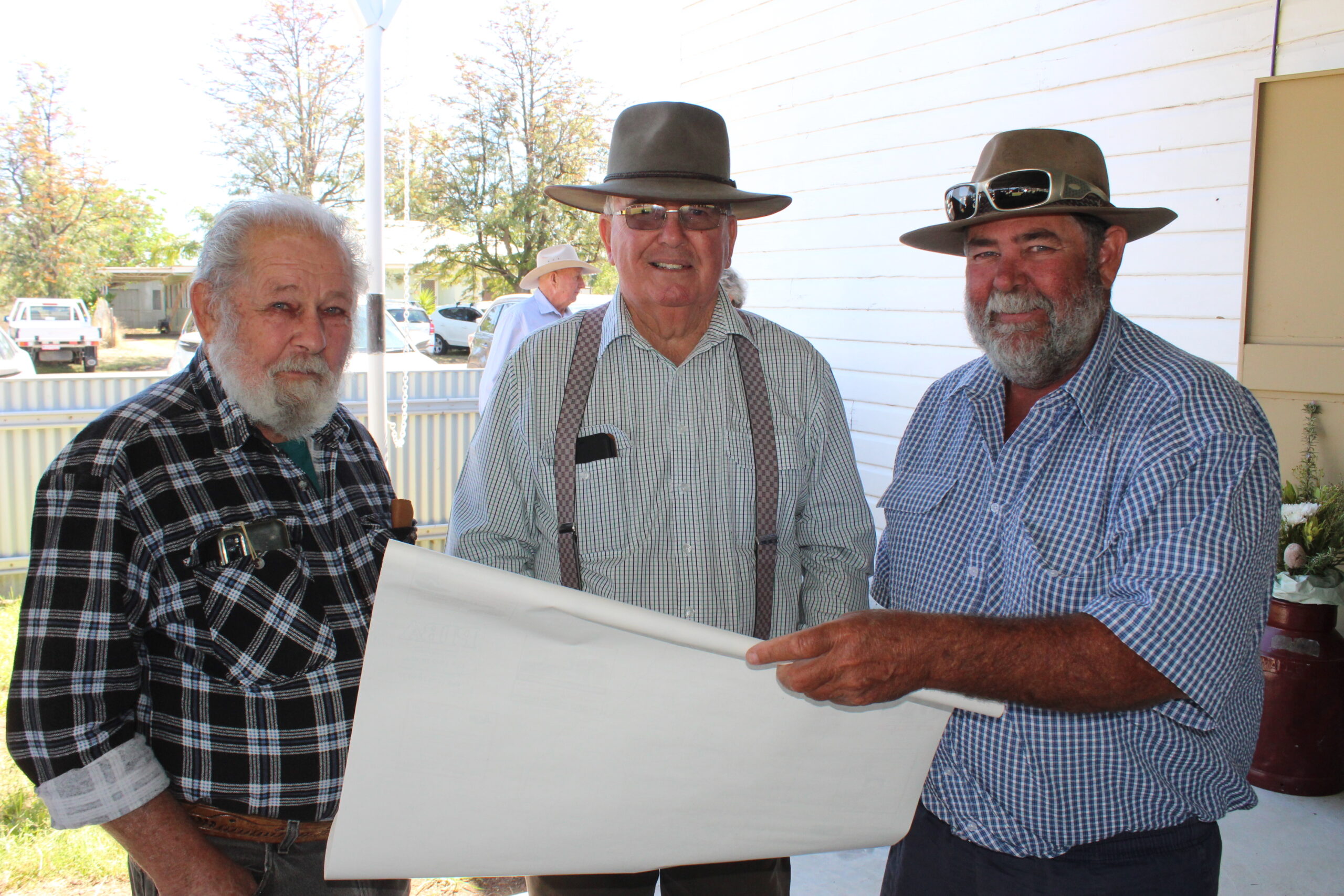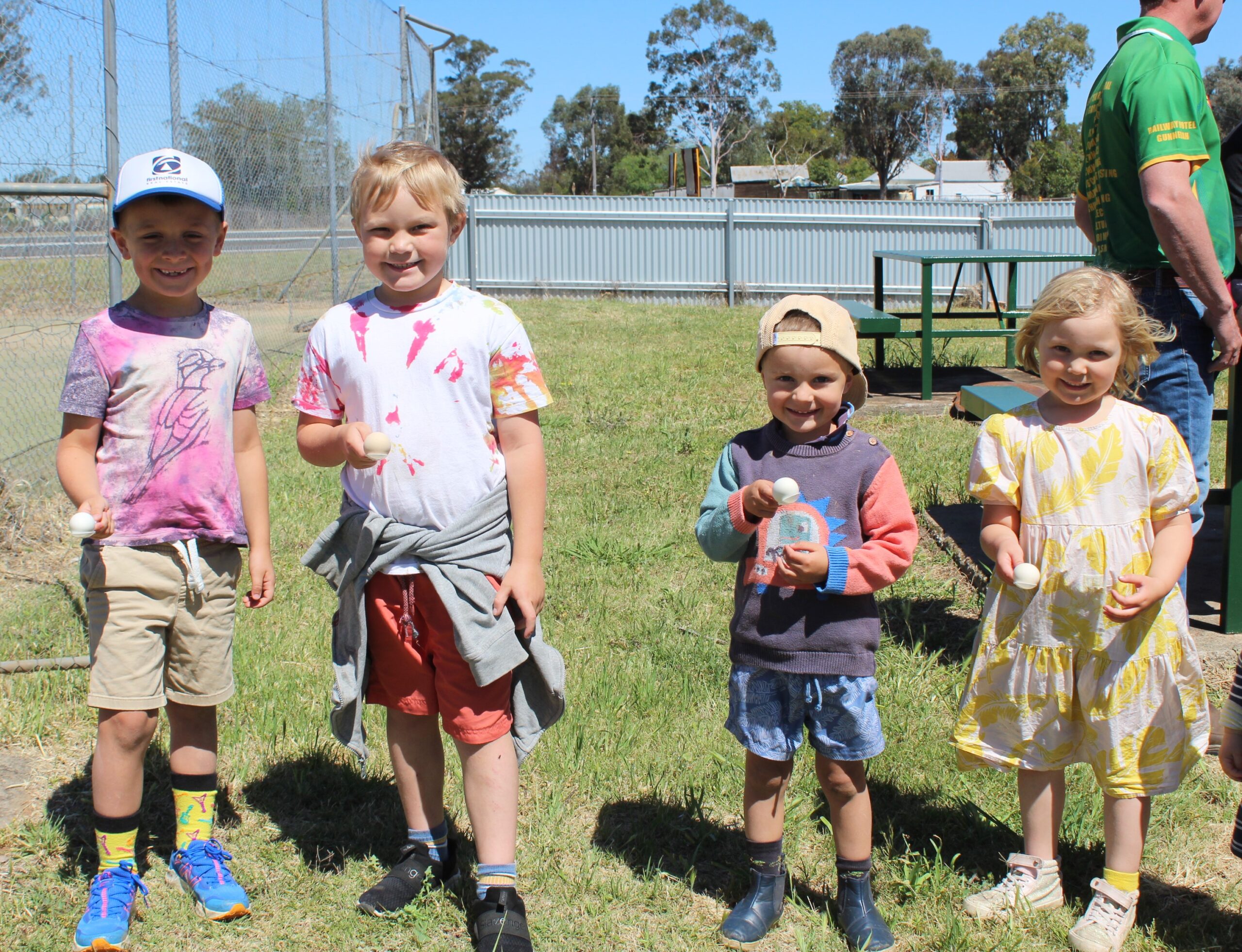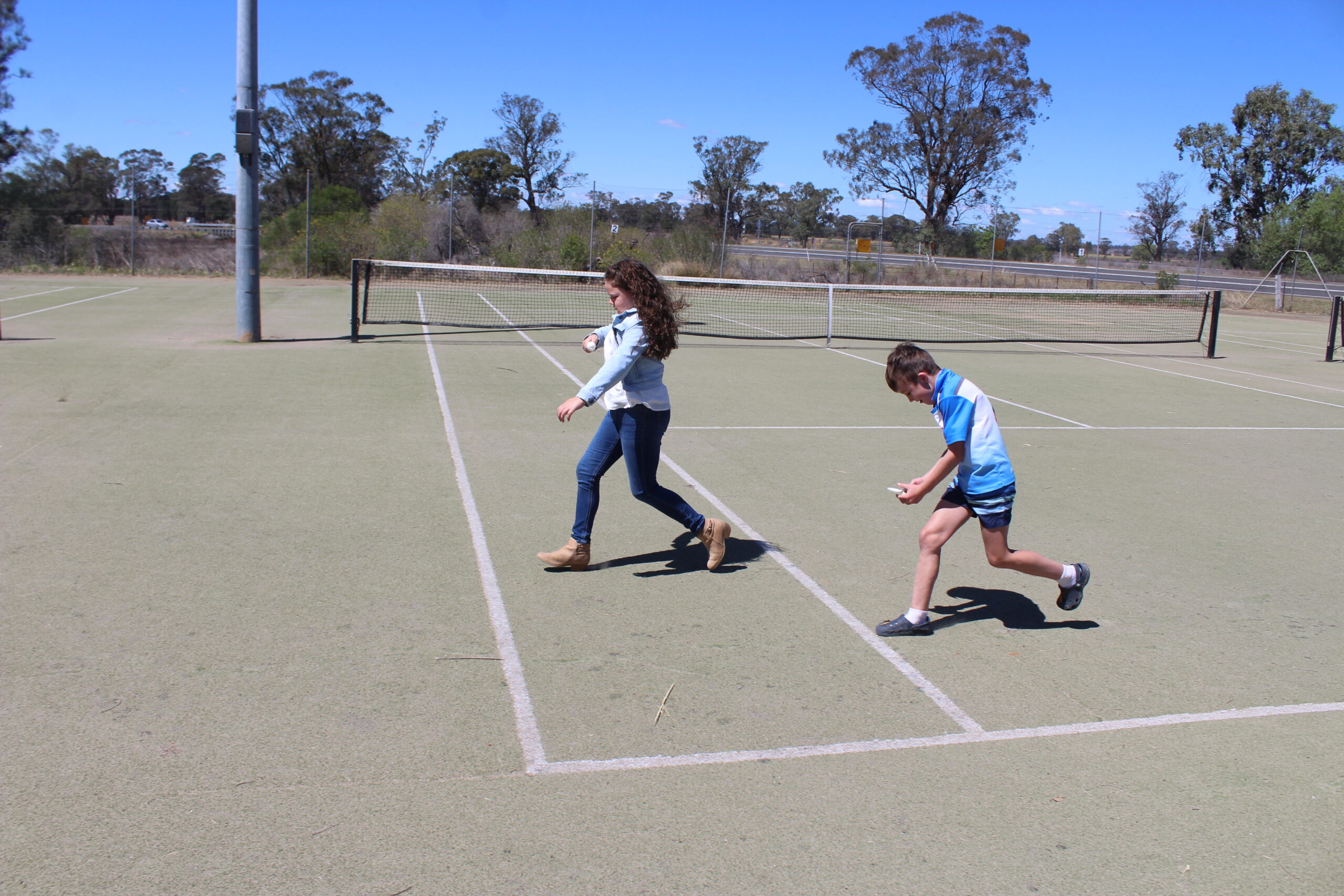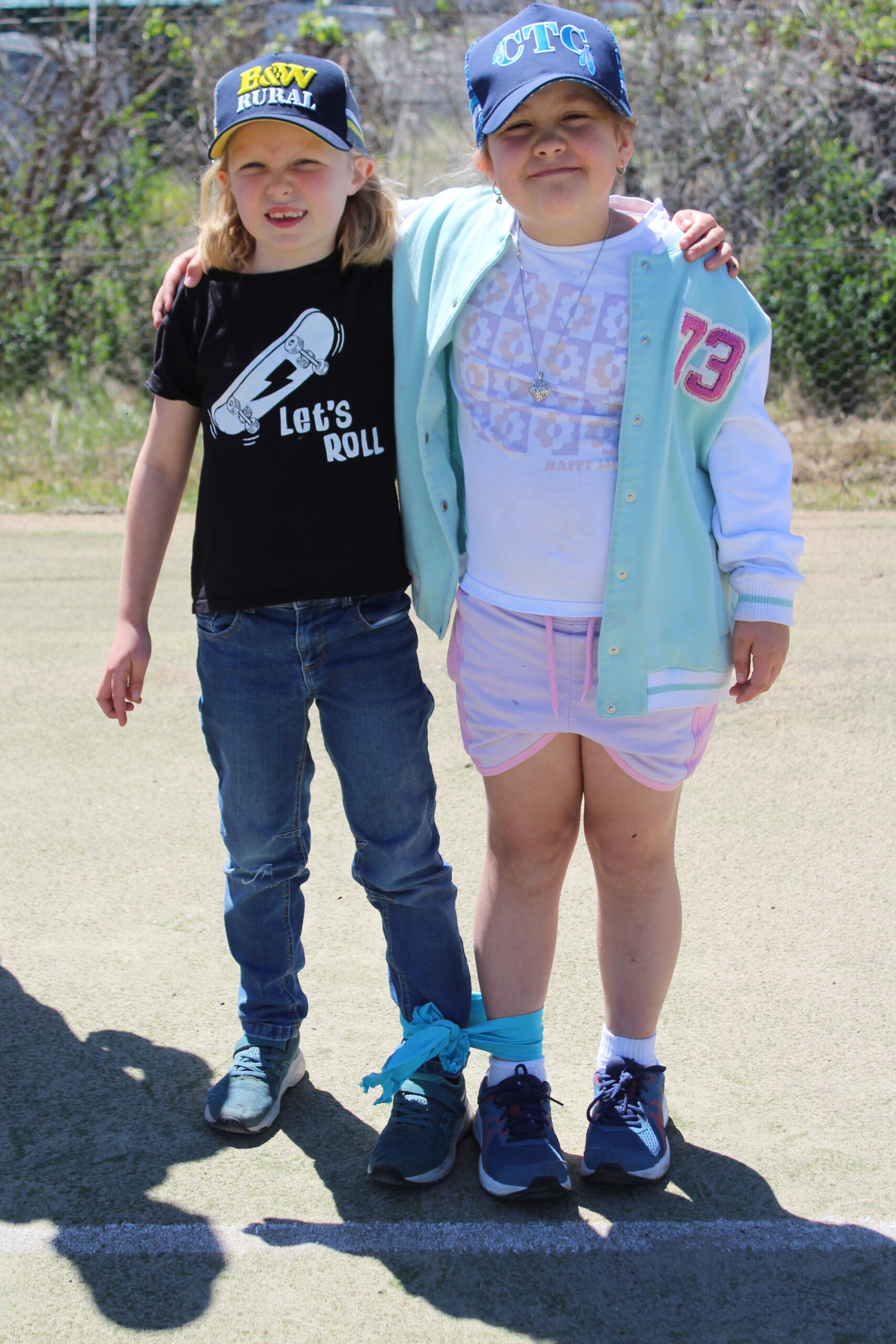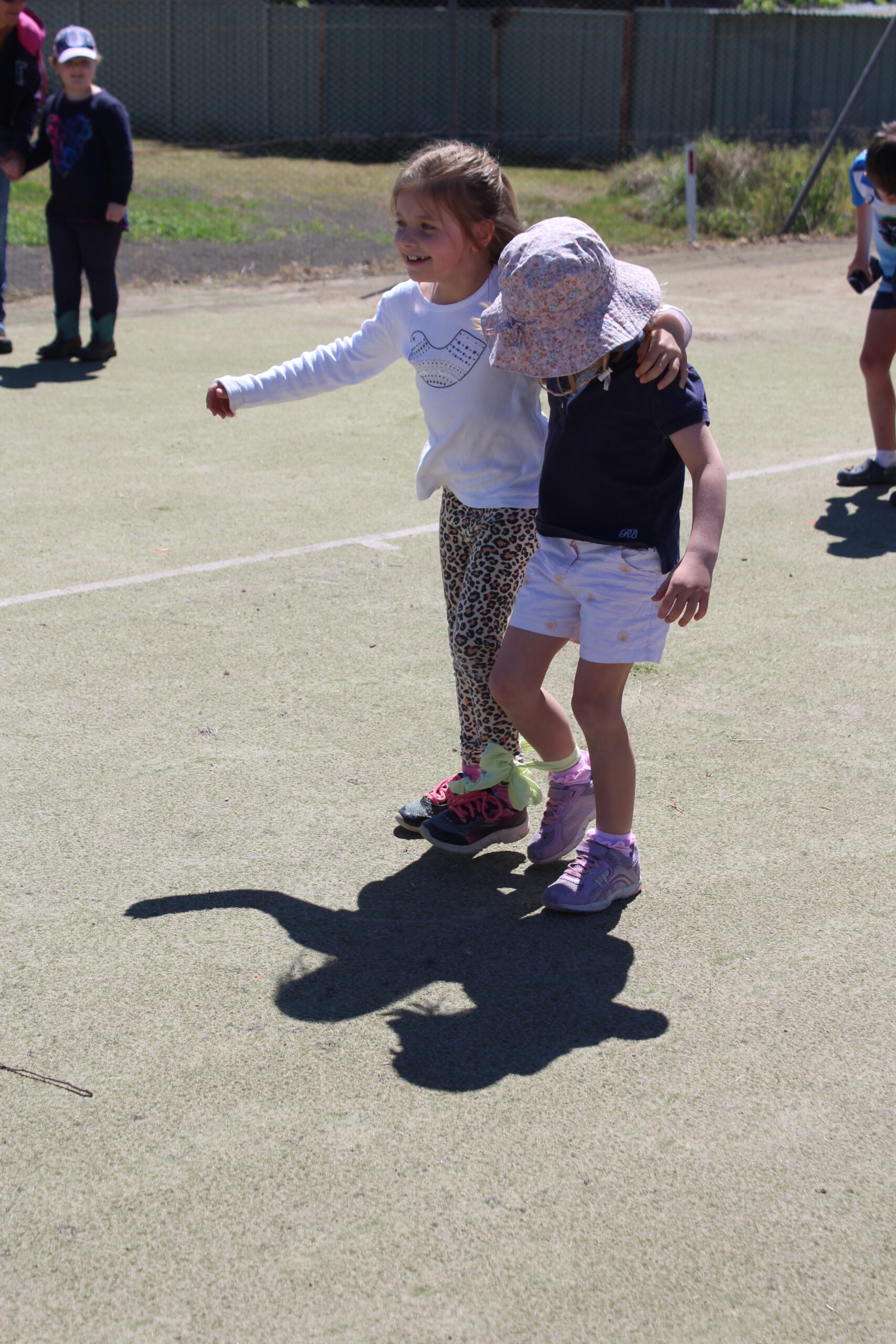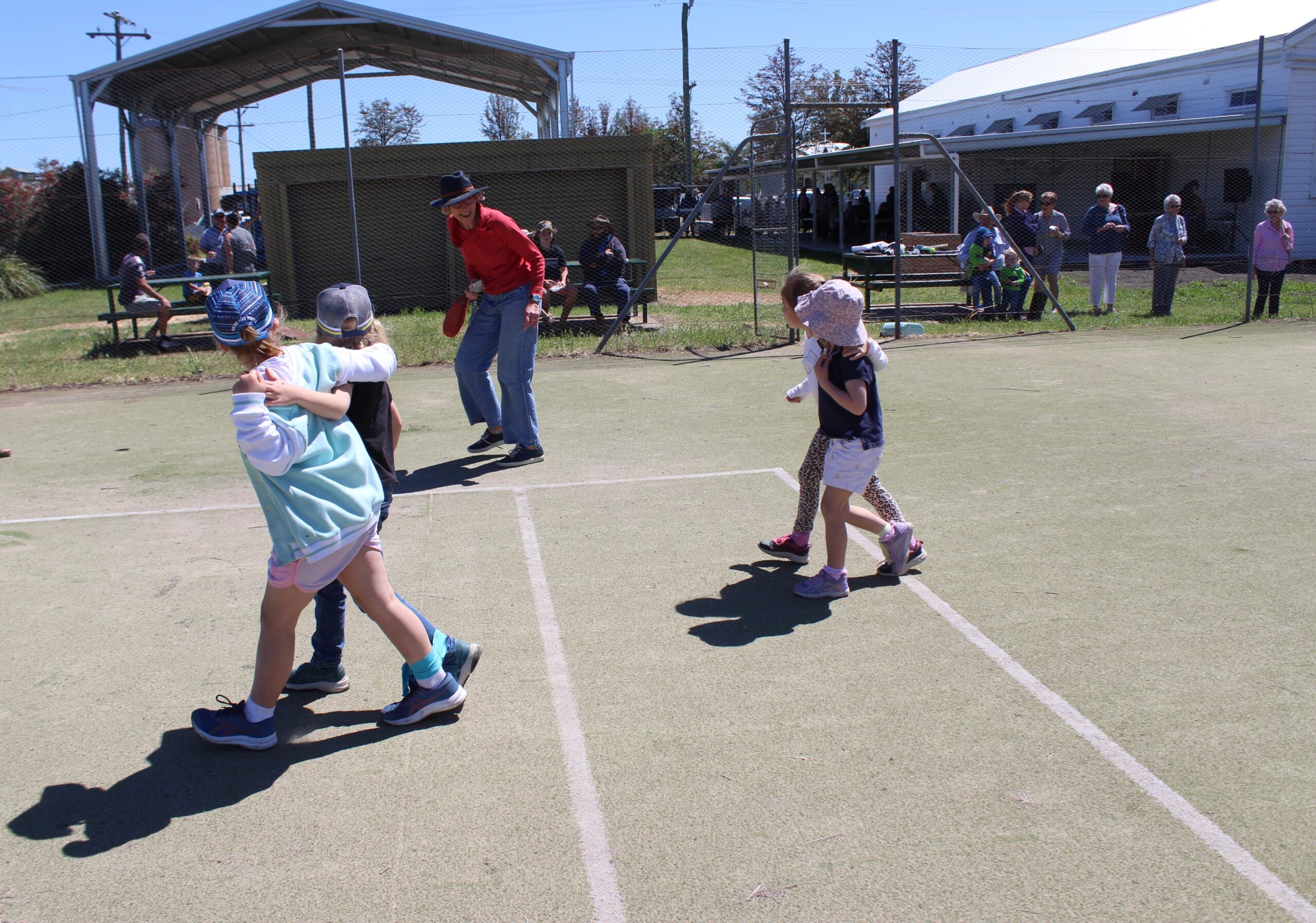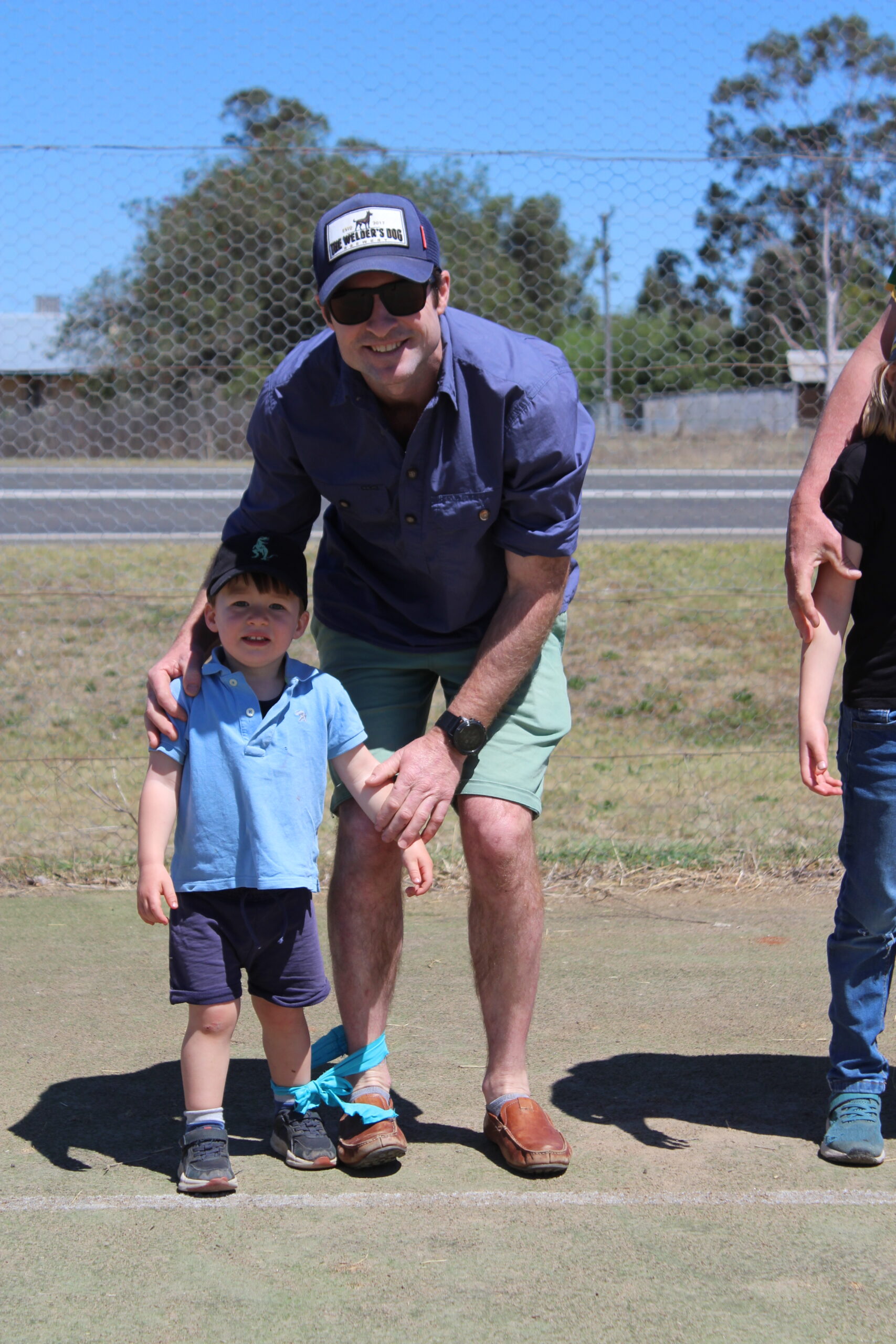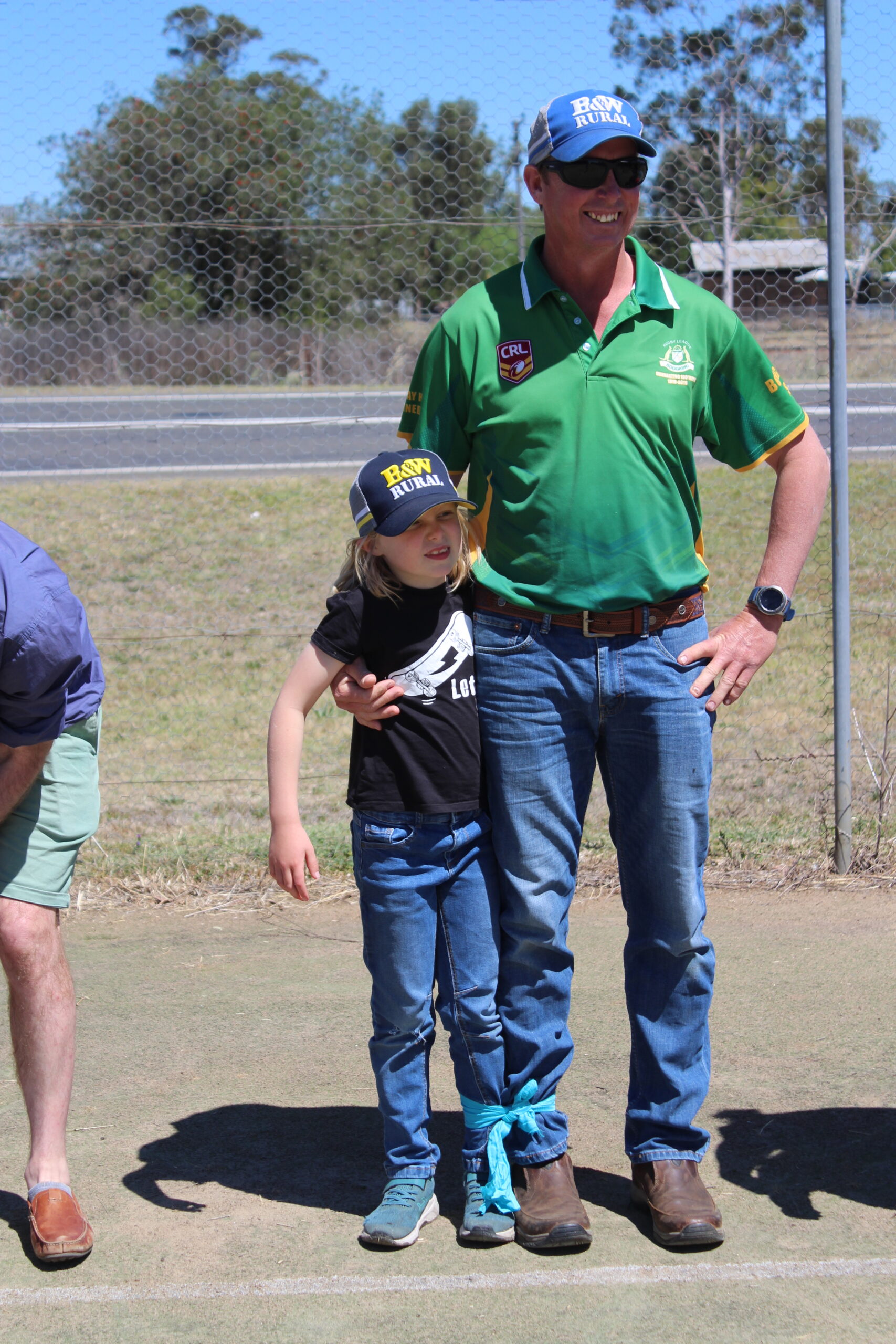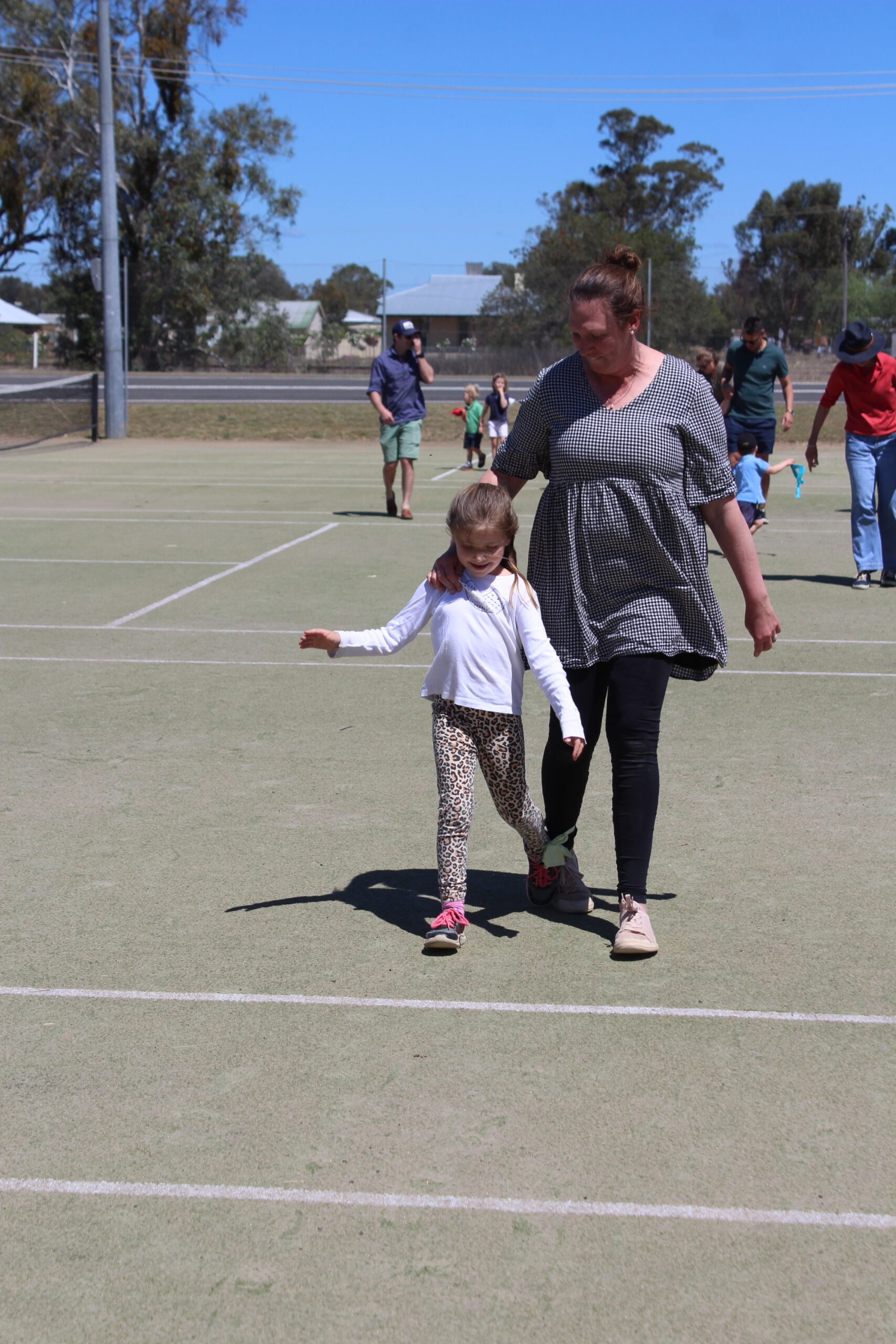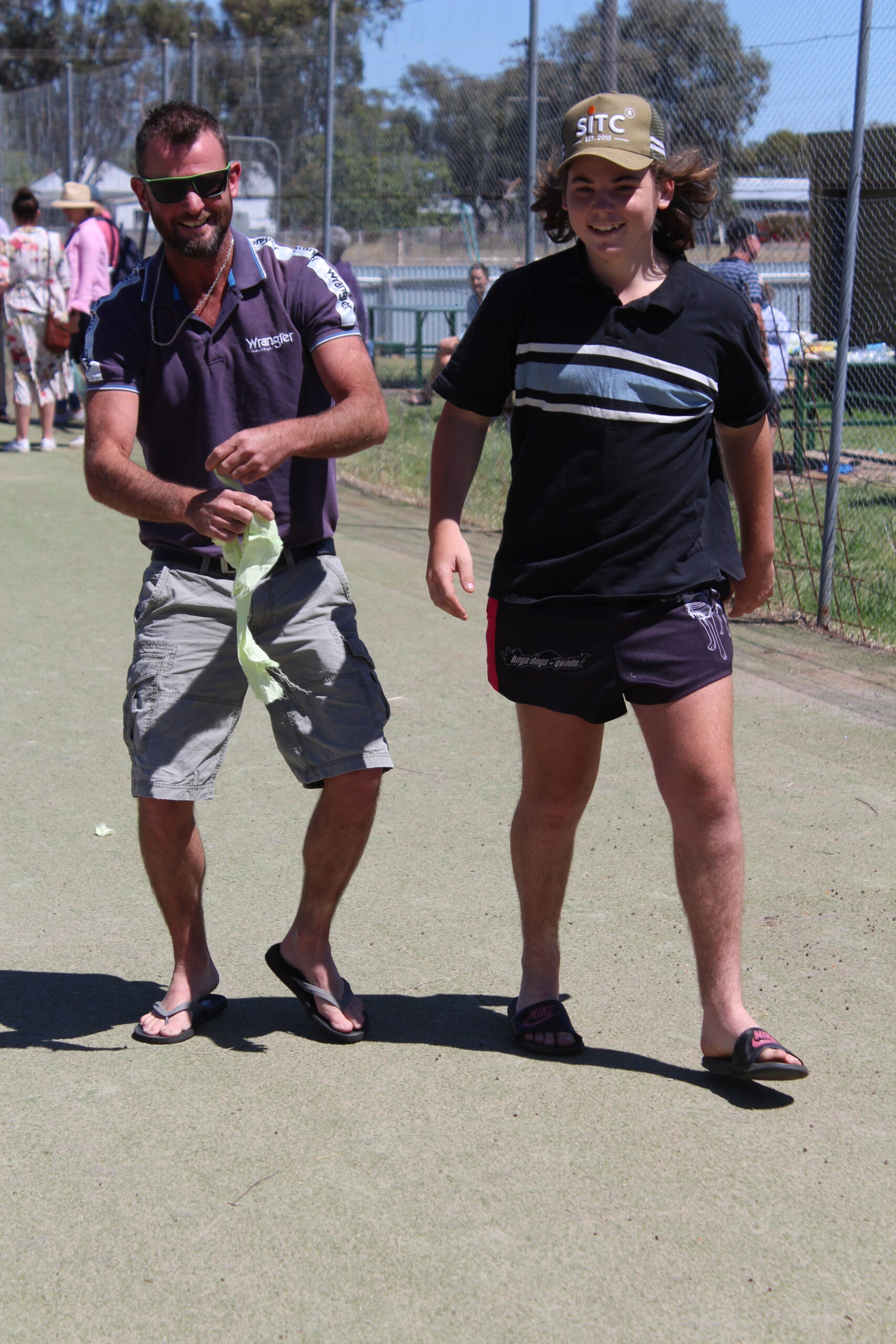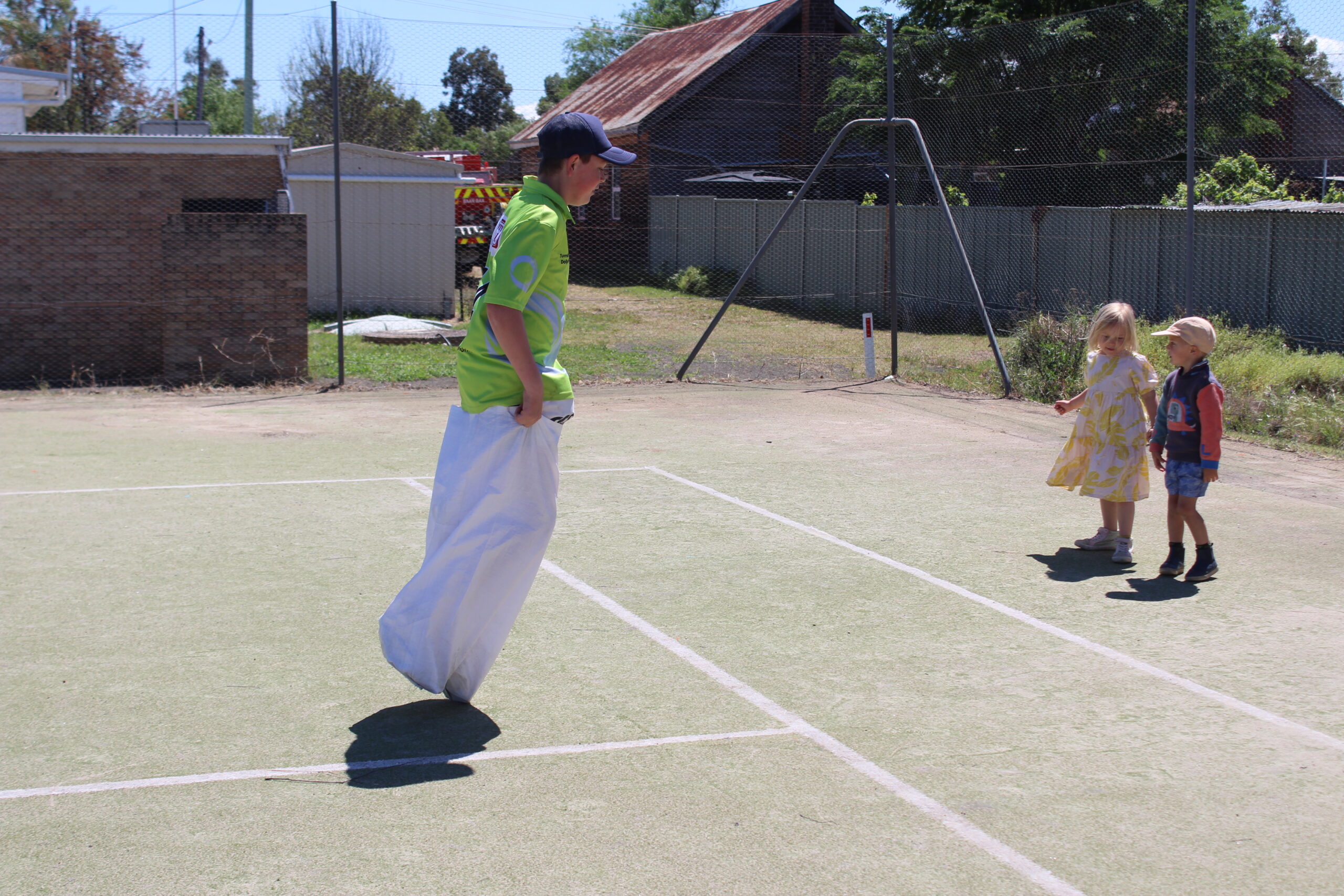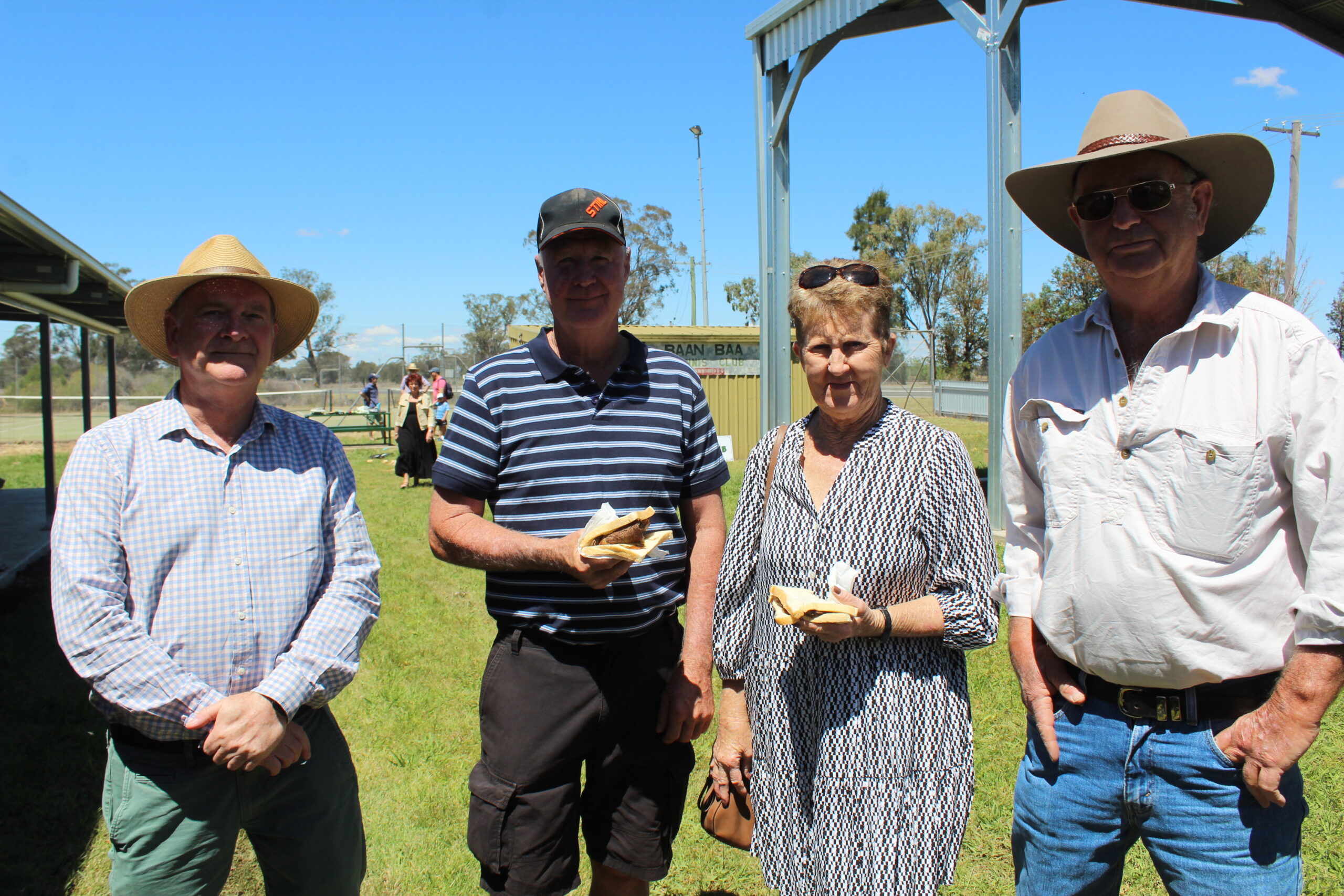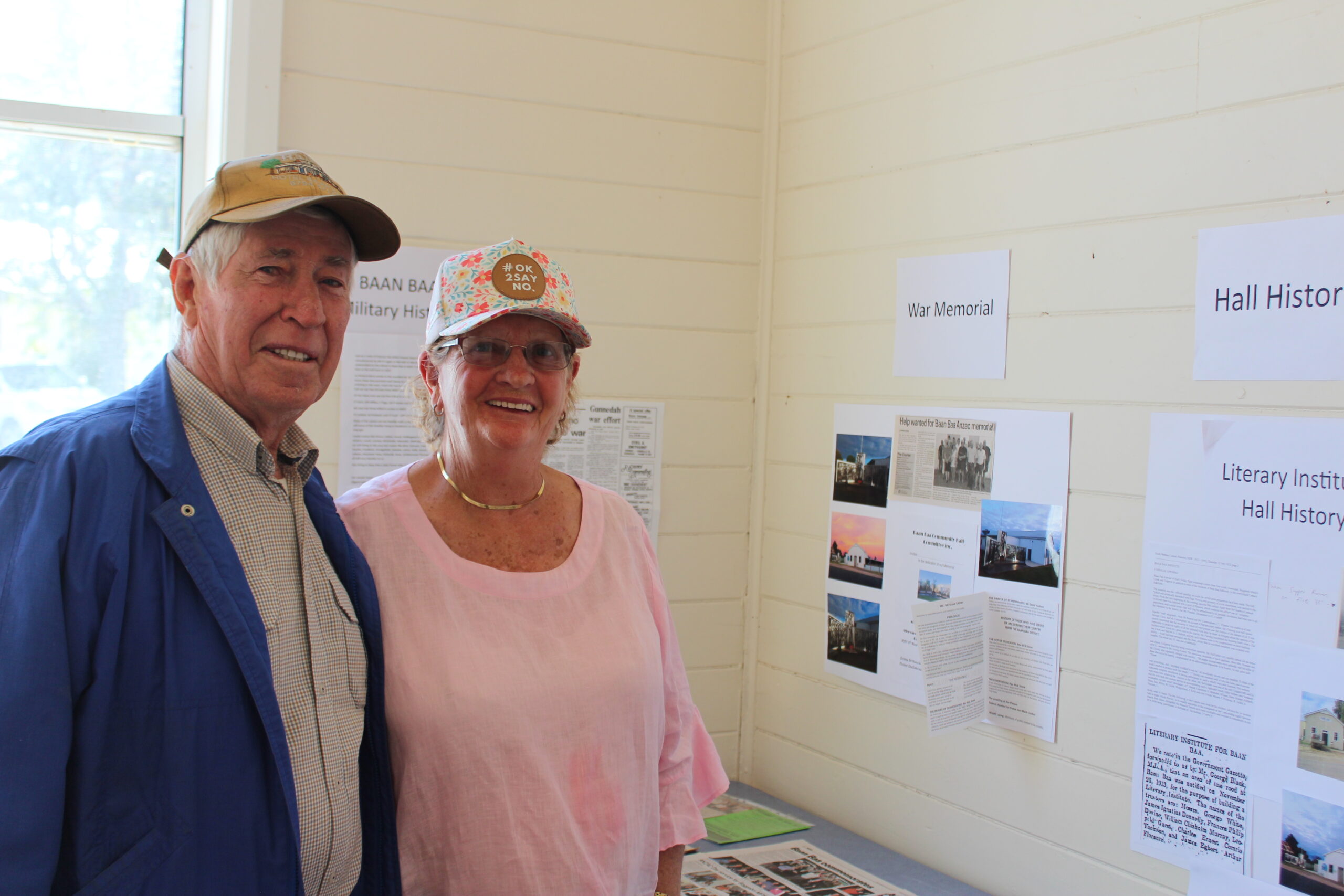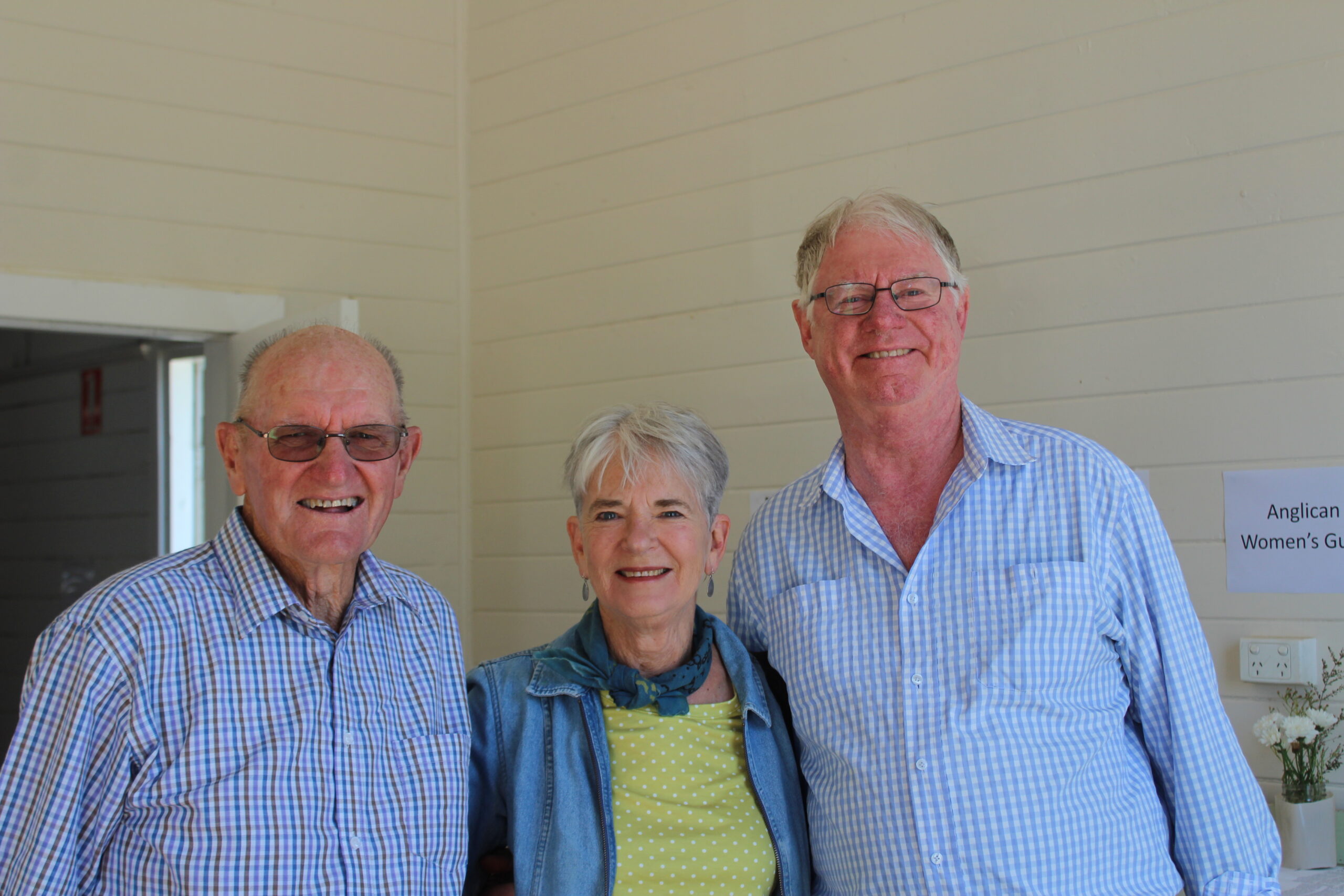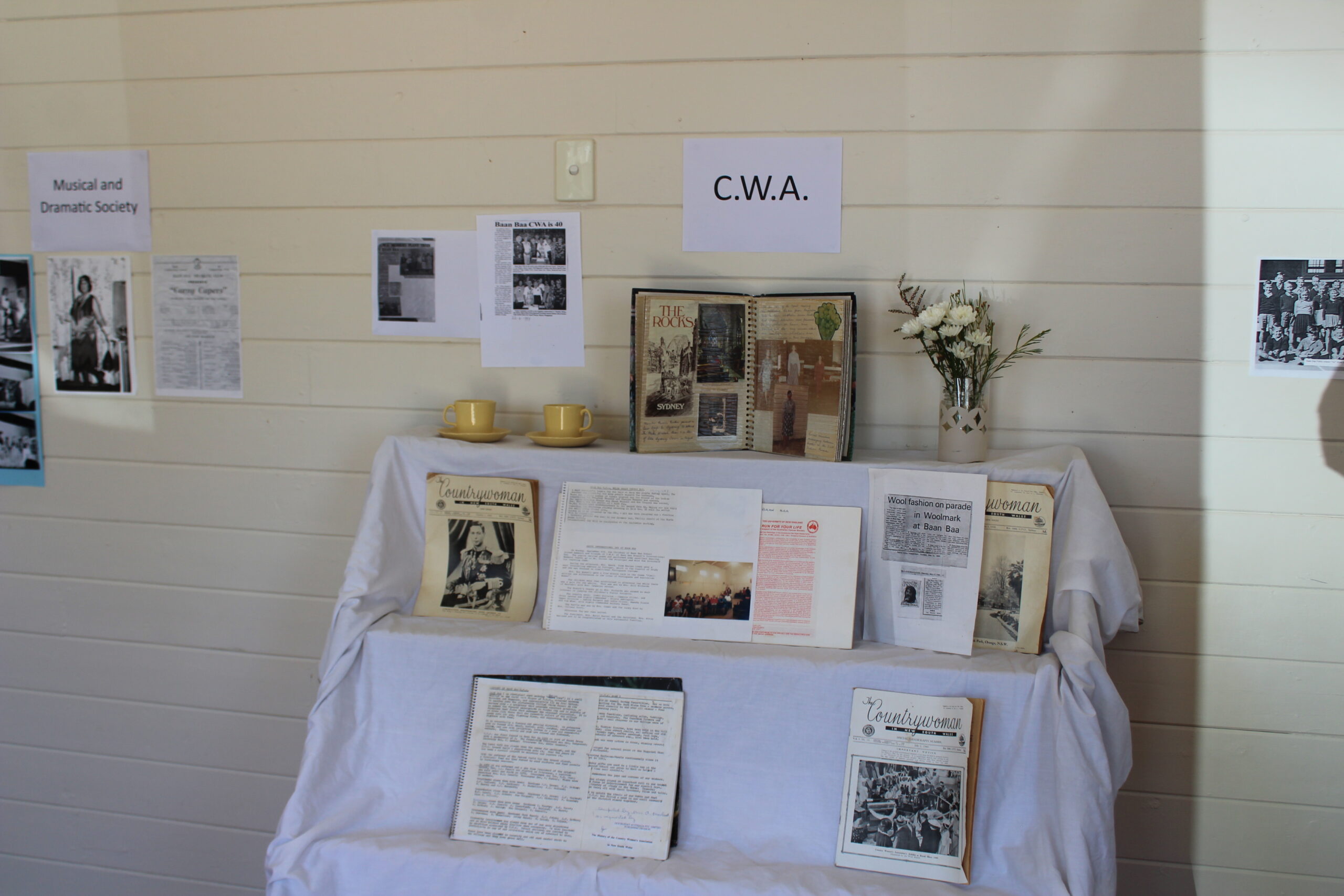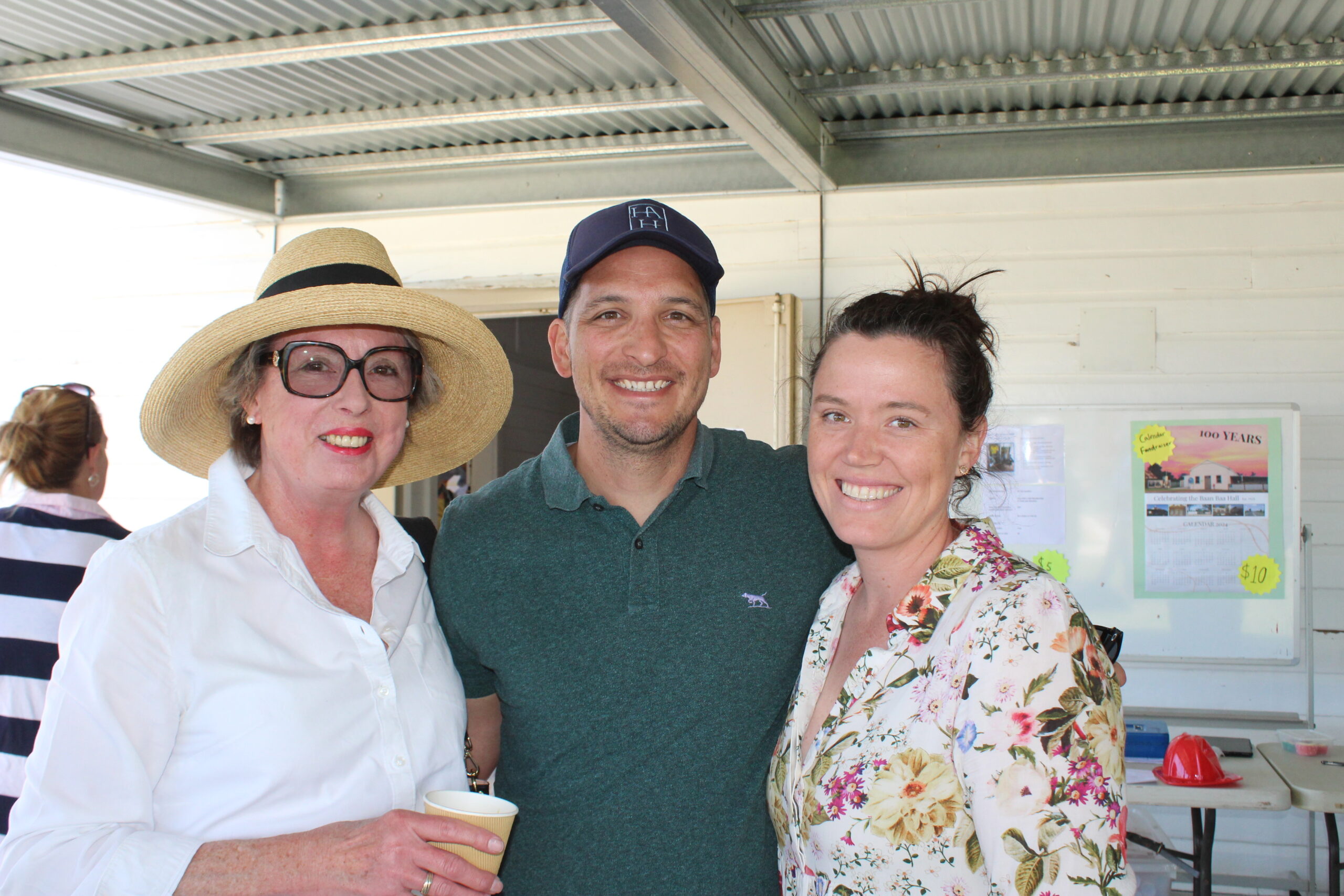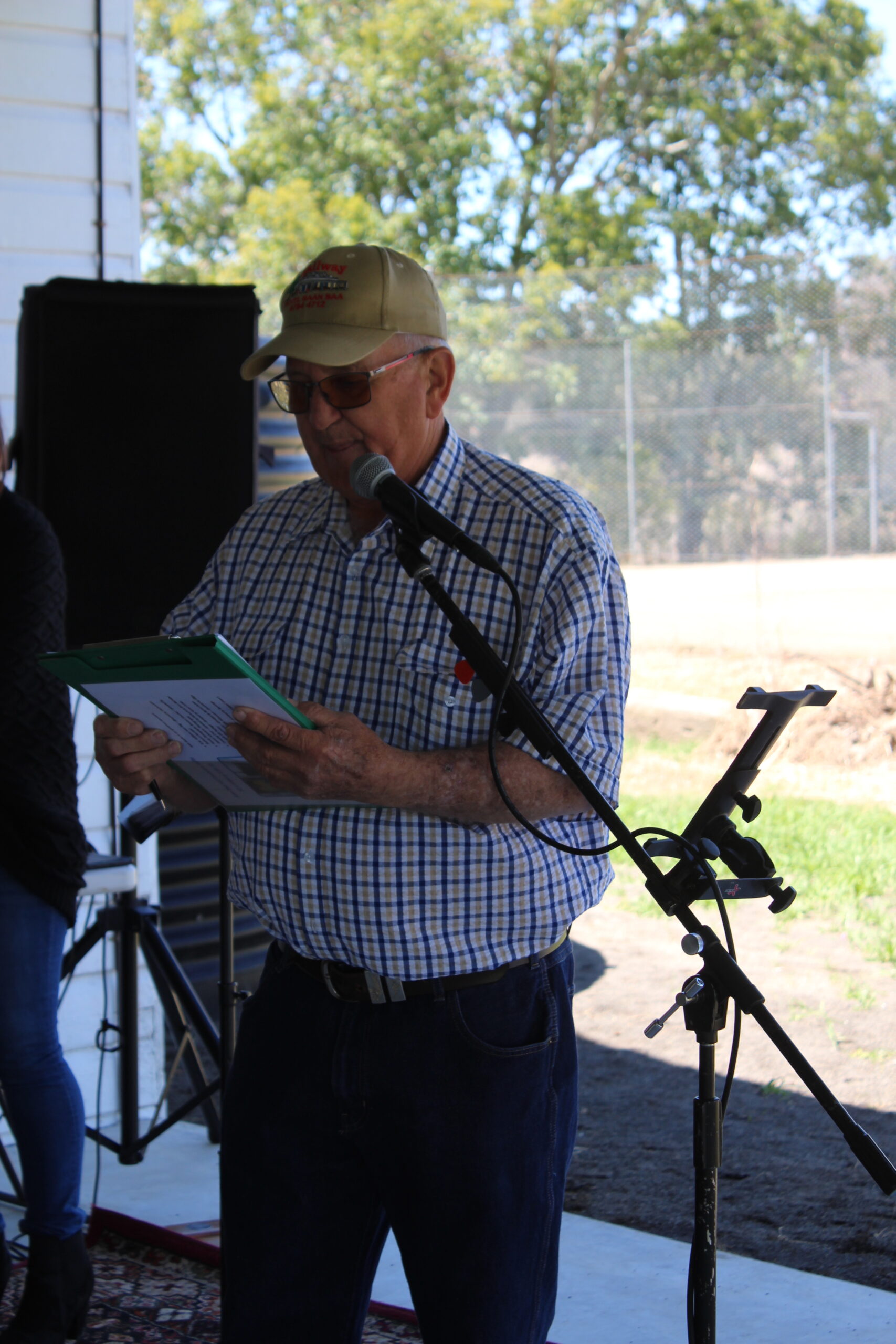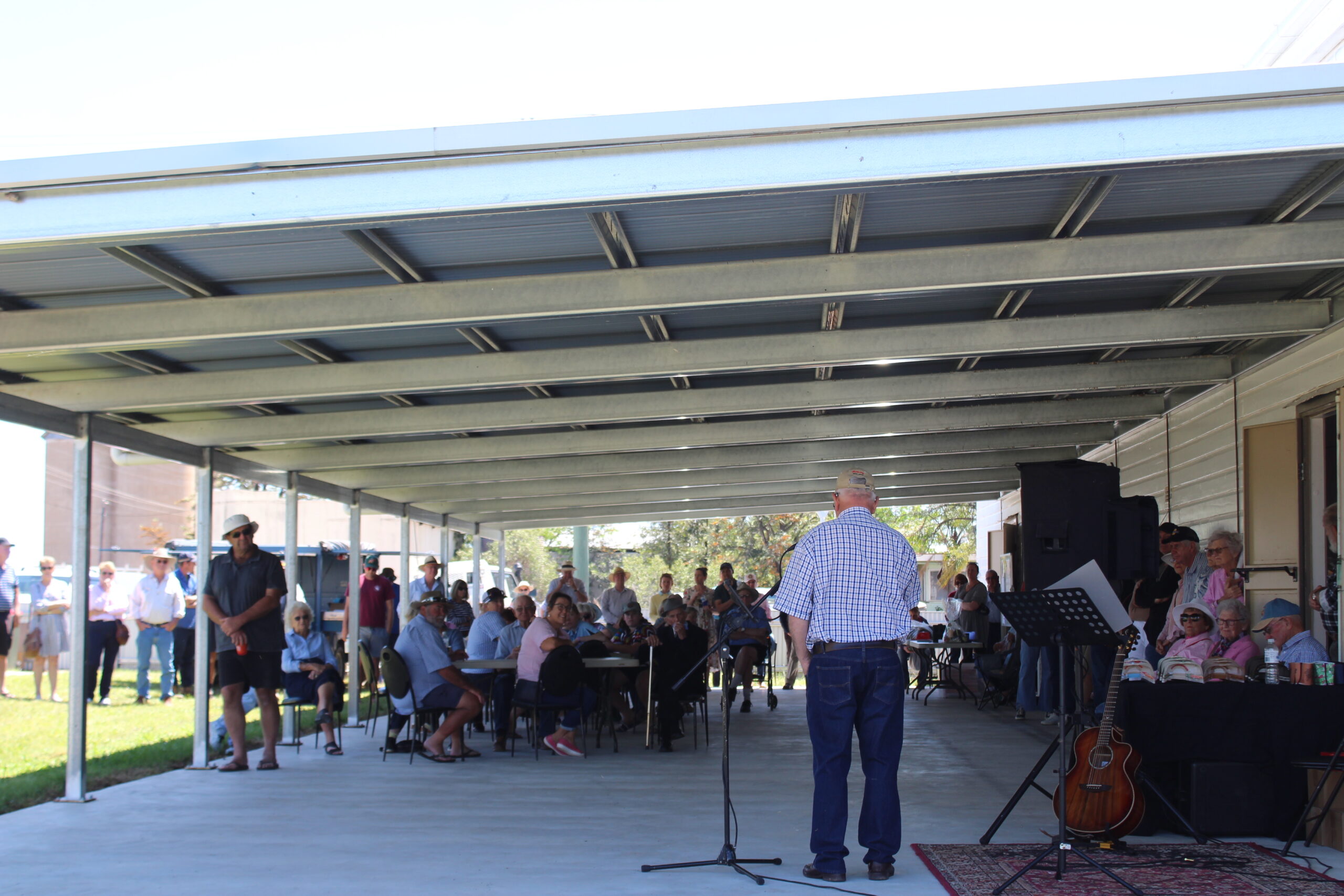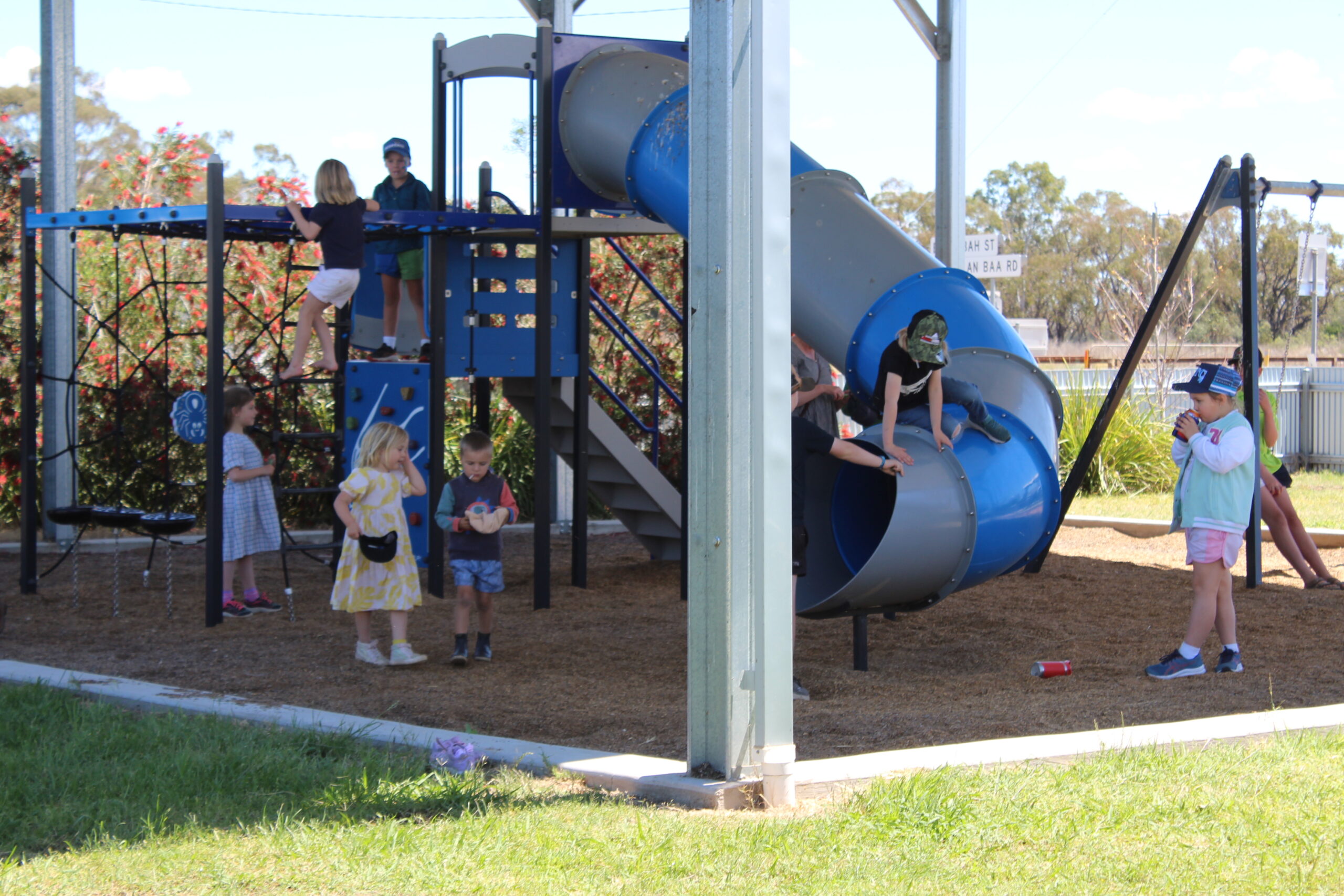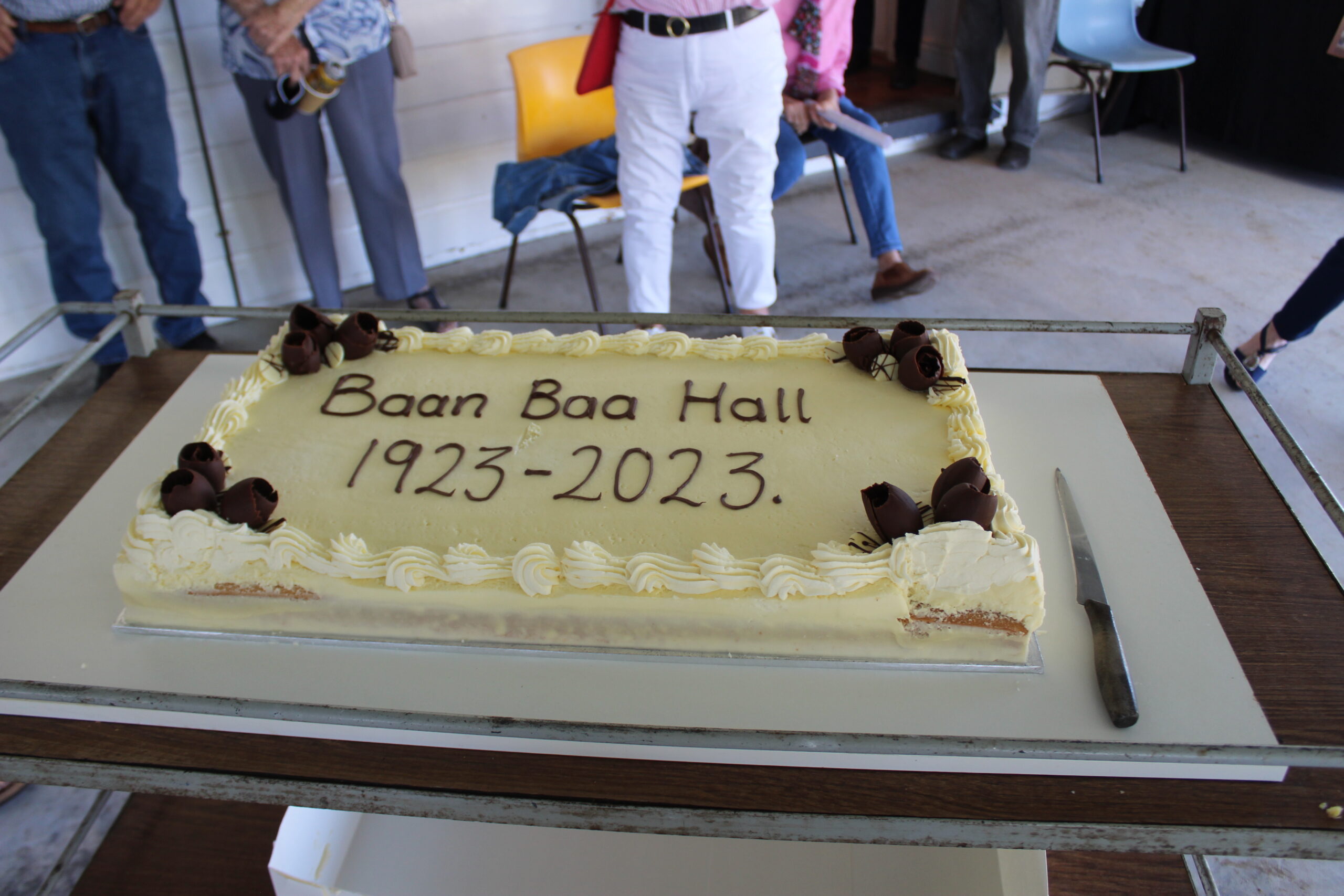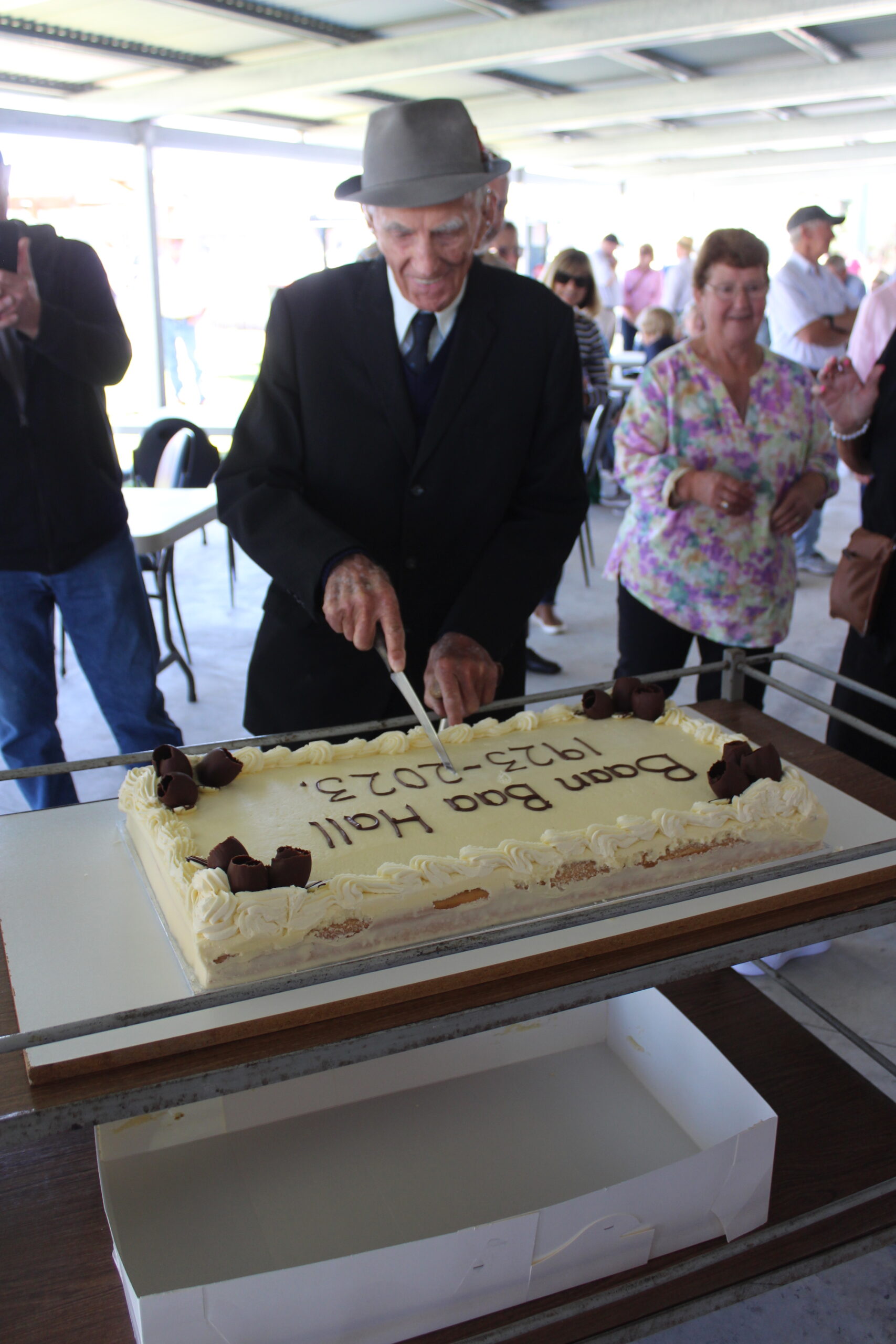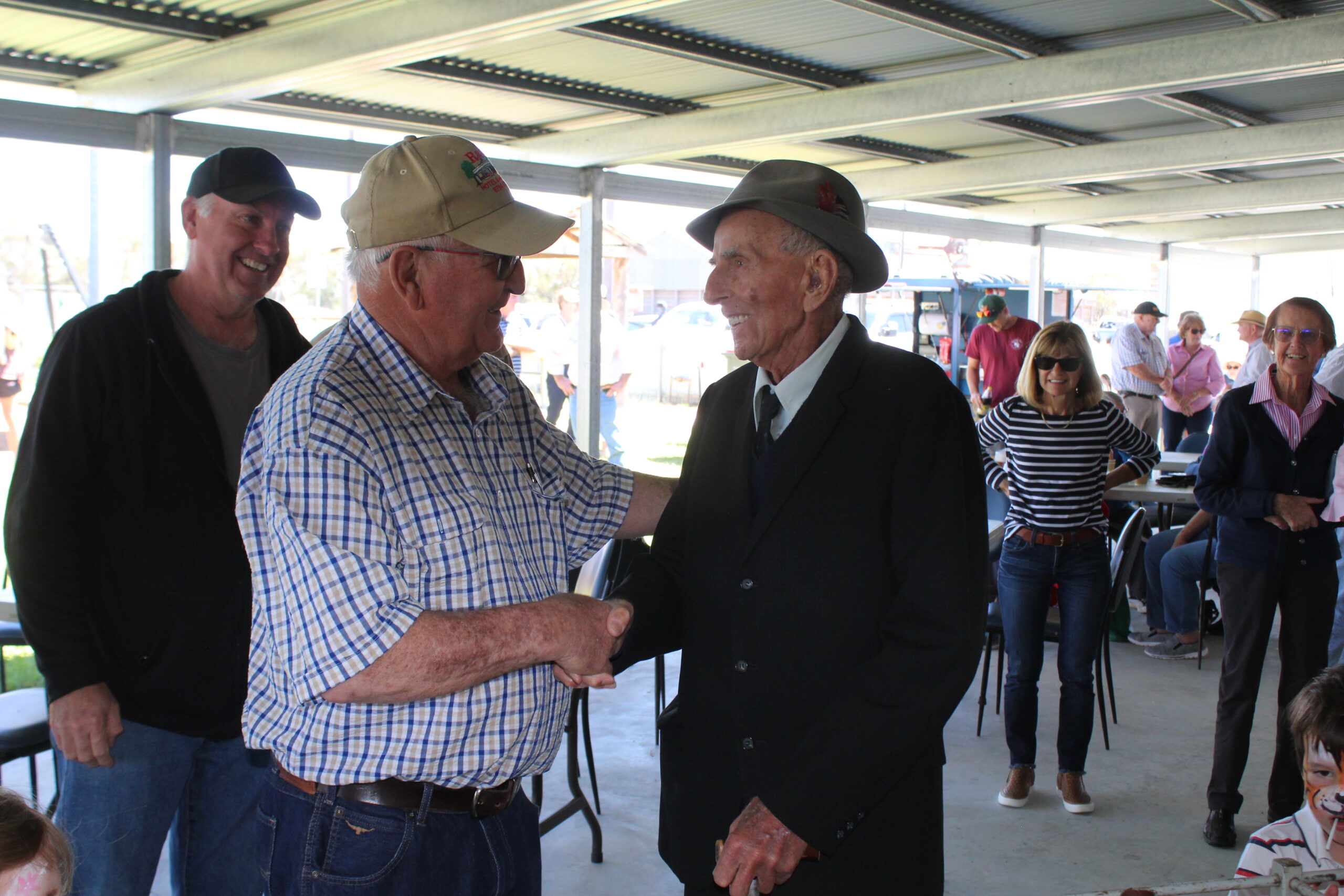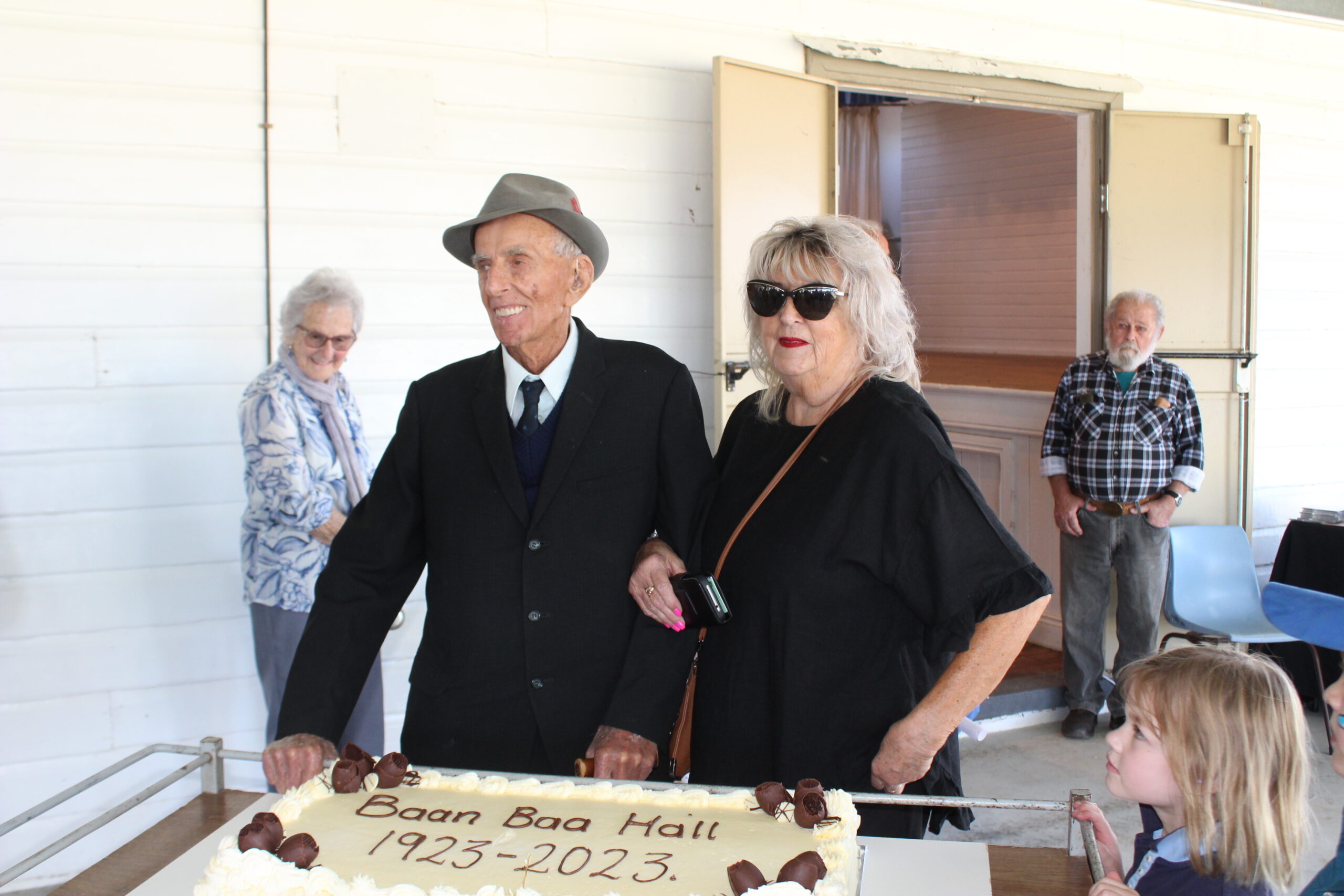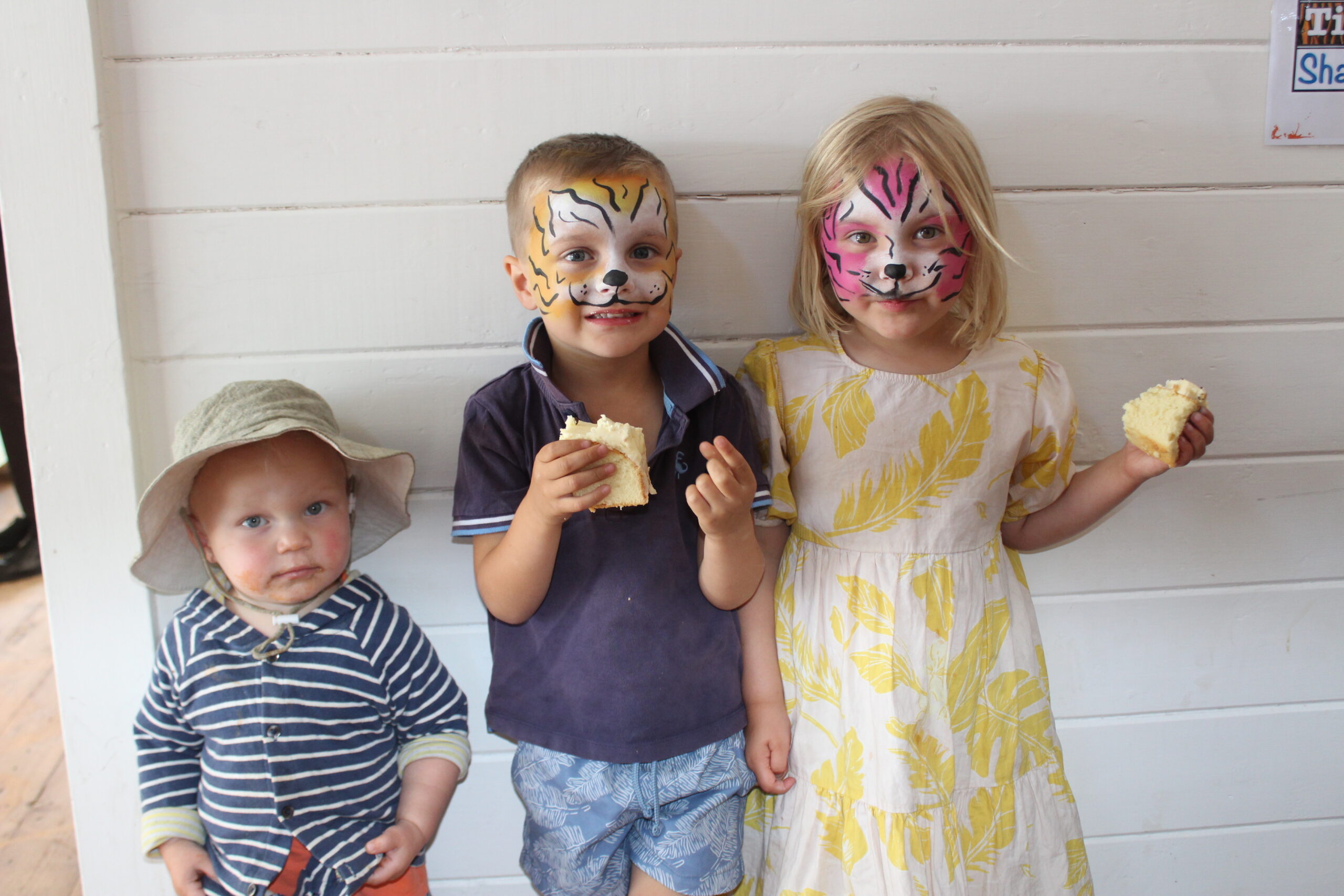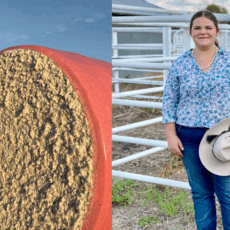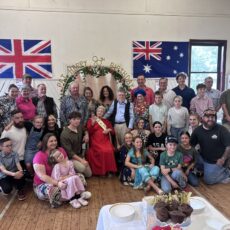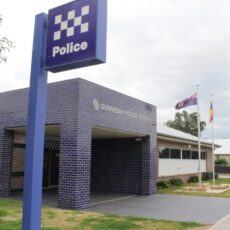In near perfect weather the Baan Baa Community Hall Committee hosted a large crowd to celebrate the centenary of the Baan Baa Hall.
Early in its history the hall was known as the Baan Baa Literary Institute.
The festivities commenced with a mouth-watering morning tea, and a chance to sit and reminisce or check out the interesting historical memorabilia display.
President of the hall committee Steve Eather gave a warm welcome to the crowd and gave a comprehensive history of the hall, prior to Baan Baa’s oldest resident Carl Patterson, a spritely 97 year young man, cutting the centenary cake.
The Baan Baa Literary Institute was erected in 1923 near the corner of Bilbil and Baranbah streets in the main part of the village and still stands today, essentially as it was when first erected and in a well-maintained condition with a few new and updated additions.
It was constructed of local cypress pine timber which was milled locally and because of this it has always been free of any termite infection problems.
The roof is of corrugated iron.
The building consists of a main hall measuring approximately 28 metres by 8 metres.
The front doors lead into a foyer, approximately four metres deep and extending the full width of the building.
At the southern end of the building there is a stage of similar proportions.
A projection room was added behind the stage for the travelling movie shows that came along later.
This was also used as a dressing room for concerts and shows.
The screen was positioned against the wall of the front foyer.
The ceiling of the building contained a decorative latticed insert down the middle of the hall to act as a ventilator, but it also allowed nest material and lice to fall in the hall from the bird’s nests which had taken up residence in the ceiling.
The original decorative latticed ceiling has been replaced by plain panels.
The walls display memorials listing the names of local residents who enlisted in both the First and Second world wars and they have now added a list of those of those who served as national servicemen from the district.
The supper room measuring approximately seven meters by 18 meters adjoins the hall on the eastern side and was part of the original construction.
A fire in the mid-50s damaged the supper room and it was rebuilt to its present size.
It originally featured a massive fuel stove, set into the kitchen area at its southern end.
The kitchen area was upgraded in 2010 with new cupboards and floor and the division and servery doors removed as was the fuel stove and a gas stove installed in its place.
Local engineer Dave Farr added the barbecue top to the stove since then.
The original story of the hall according to research by Mr Eather is interesting.
The Literary Institute in Baan Baa had its origins at a public meeting held in the town on May 12, 1922.
This meeting, apparently instigated by the local Farmers’ and Settlers’ group, was held in what was known as ‘Kelly’s Hall’, which stood immediately to the east of the present hall and opposite what is now a vacant lot on the other side of the street.
At the time, this vacant lot was the site of the original Baan Baa Hotel which was operated by John Kelly. It was he who built ‘Kelly’s Hall’, at his own expense, on the opposite side of the road.
The present Railway Hotel that is now owned and operated by the Maunder family, was built later to the east of the original hotel.
‘Kelly’s Hall’, was very small, measuring only nine by six metres.
Despite this it was said to have accommodated 100 people at a supper on the day that it was opened in 1906.
From then until the early 1920s, it served the town as the main meeting venue but by then, had come to be regarded as inadequate because of its small size.
The Literary Institute Committee which was set up as a result of the public meeting on May 12, 1922, was an extensive one consisting of sixteen members.
Mr TJ Fleming was elected chairman and also served as the treasurer. The secretary was Mr A Devine.
The committee estimated that the cost of erecting a hall would be in the order of £600.
A subscription list was opened with the first contributions coming from E Maunder and T Devine, who each subscribed £5, and N Hudson who gave £1.
Three trustees, LW Kelly, TJ Fleming, and Edward Maunder were appointed to negotiate a mortgage for the project.
Another public meeting was held to decide on whether the building should be constructed in brick or timber.
The new Railway Hotel had just been built using bricks which had been fired from clay found just to the east of the town and it was thought that a similar procedure could be followed for the Literary Institute.
In the end however, consensus favoured the use of timber.
Tenders were called on November 8, 1922, and advertised in newspapers in Tamworth, Narrabri and Boggabri.
The highest tender of came from M Peterson; the second of £974 was from EJ Hulbert; and the third of £925 was from HJ Cole.
All quotes were considered to be too high.
Negotiations took place with the tenderers and Mr Hulbert amended his figure to £920 (without lighting).
This quote was accepted and work began on the building early in 1923.
A quotation for seats for the hall was also considered too high and the committee decided to buy “200 feet of dressed timber” and make its own stools.
An amount of £33/15/- had to be found, however, to pay for a ‘Wight Lighting System’, which ran on petrol vapour and which provided five separate lights.
They were apparently quite bright for it is recorded that local resident, Herb Eyke, later made shades for some of the lights to minimise their glare.
The official opening of the hall was held on July 6, 1923.
It was decided to have a plain and fancy-dress ball followed by a juvenile ball on the following evening.
Tickets were priced at ten shillings and sixpence for a double, seven shillings and sixpence for a ‘gent’ and five shillings for a ‘lady’.
Children under the age of 14 were admitted free of charge.
The women of the district ran a stall and sports day to start raising for money for a piano for the hall.
The music on the opening night was provided by Mrs Heagney from Narrabri with local woman, Miss Eddie Perkins, performing the honours at the juvenile ball on the following evening.
A new committee was elected in July 1924, again with TJ Fleming as chairman.
When he died some six months later, his place was taken by S Eather.
Fees were set for the rental of the hall at ‘two quineas’ per night and £1/10/- for a half night.
Records of this period provide a good indication of the extensive use to which the new hall was put and the types of functions which were held in it, during 1925, for instance.
A ladies’ social was held on May 23, Gordon’s Pictures (travelling picture show) rented the hall on May 27, a school social was held on May 27, the Cockatoo Farm Comedy Company staged performance on June 3, a ball for the piano fund was held on June 6, a Roman Catholic Ball was held on July 15, followed by a Catholic Juvenile ball on the following evening, the Rev. Lancaster produced a concert on July 25, a juvenile social was held July 26, a football benefit evening was held on July 30.
The Baan Baa Literary Society building has always provided a very valuable community venue for dances, socials, balls, church bazaars, concerts and school functions.
Long term residents, Dick Eather, 97 and Vida Eather, 94 now reside in Tamworth and sent their apologies however Dick recalls:
“Up until the 1960s, many balls and dances were regularly held in the hall.
“Early post-war balls, as I remember them, were happy affairs, the ladies lining the walls while the men congregated outside during dances.
“Supper was a two-course, sit down affair, usually with two sittings and alcohol was not permitted in the hall.
“I remember that one CWA Ball was opened by the Spanish Ambassador.
“Regular Saturday night dances were held to music supplied by piano, violin and drums.
“Later, they became Cabaret Balls.
“At one stage, an annual Revue was held, two nights to a packed house.”
For a number of years, up until the 1980s, the Bank of New South Wales ran a weekly banking service from the foyer of the building.
Noreen Boehm remembers accompanying the bank manager on these weekly trips and the pistol practice that the staff attended that was also conducted in Baan Baa area.
In earlier times, the foyer was also used to provide limited community library services run by Mardie Brown and later Ettie McLeod.
For a period of time there was also a post office service.
The two offices were divided by a timber division, which is now on the stage, to replace the original hessian backing.
The Baan Baa Literary Institute building was managed by a special committee and trustees until the early 1990s.
At that time, it was taken over by a community committee, incorporated which continues to manage it and to let it out to interested groups, including local farming organisations, CWA,
Rural Fire Service (or Fire Brigades as they were known) Rural Youth and the Public School who held annual prize giving ceremonies and concerts in the hall.
For many years, the upkeep of the hall was funded from the proceeds of a successful annual gymkhana, but this is no longer possible because of the increased cost of public liability insurance associated with such events.
Many people present spoke fondly of the fun times they experienced and remembered of the gymkhana days.
The wheat sheaf tossing, gum boot throwing, chasing the greasy pig, catching the rooster, tug-o-war, fresh egg throwing and catching, foot races, egg and spoon races, sack races, three leg races, and wheat lumping were a few that were discussed at length.
Colin Guest told the story of how he and Maurice Guest won the wheat lumping competition for 10 years in a row.
Little use has been made of the hall in recent times except as the venue for a very well-known and highly regarded annual community ball.
The most recent one of these in 2004, attracted over 300 patrons and made use of a specially erected catering marquee.
Mr Eather said: “Lately the hall has been used as a polling booth for local, state and federal elections and will be in use for Saturday’s referendum.
“It is now used regularly by mining groups for meeting and instruction days.”
He went on to say the additions like the opening between the hall area and the supper room, the kitchen renovations, the ceiling repairs, painting inside and outside, the building of the skillion on the western side of the hall as well as the backing of the memorial have been done by Allan and Leone Grumley’s team Grumley Builders.
This money has been sourced through grants.
In the 1980s Duck (Ron) Chappel restumped the hall with brick piers to replace the pine stumps which had rotted out.
The late Tim Kennedy did a lot of work in the hall including sanding and varnishing the hall and supper room floors as well as organising the purchase and fitting of the gas stove in the new kitchen.
The memorial itself was funded by donations and proceeds from a fun day held at the hotel and generous tradesmen who gave their time either or at a very good rate.
The steel doors on the side of the building replaced the original timber ones probably eight or ten years ago.
The Narrabri Shire Council sourced grants for the play equipment and shed on what was originally allocated for a police station.
The tennis club had a practice court, and the rest of the space was used for parking at functions, tennis, or the hall.
The young children were quick to check out the new playground equipment prior to participating in the old-fashioned novelty games.
The egg and spoon race was hotly contested, and thankfully the eggs were hard boiled or Frank Maunder would have had a massive clean-up job on the tennis courts.
Mr Maunder had spent many hours cleaning up around the courts and having them in tip-top condition for the novelty games as well as ready for a set or two of tennis later in the afternoon.
The sack race saw a few spills and the three-legged race was fun to watch.
It was not just the young children who found their co-ordination challenged when tied by the ankle to their partner.
The very talented secretary/treasurer of the hall committee, Ellen McClung, not only was a leading force in the organisation she was the talent behind the face painting.
From the beginning, the hall has been an integral part of the community and has served its community continuously, for the whole of its existence.


